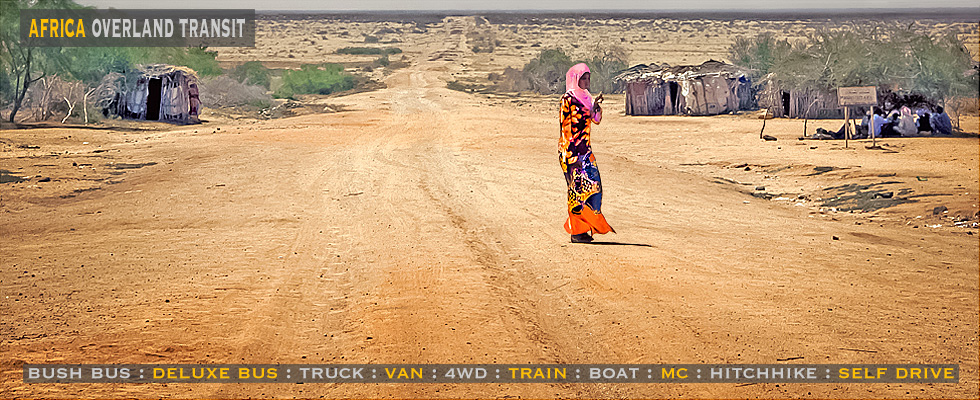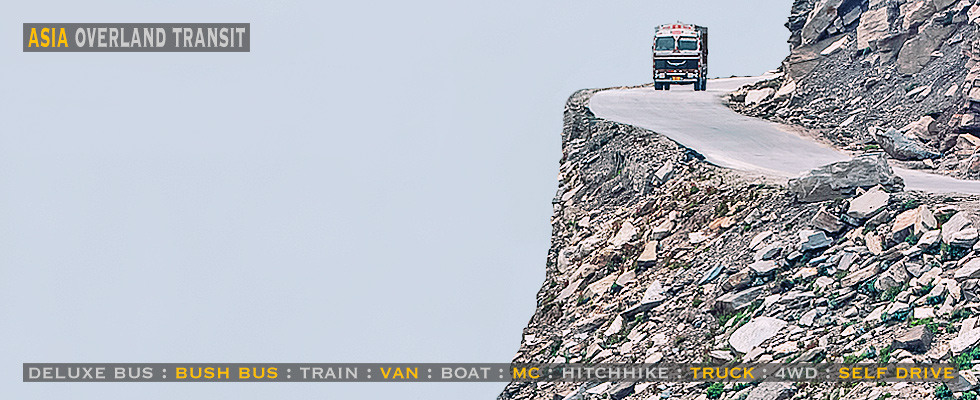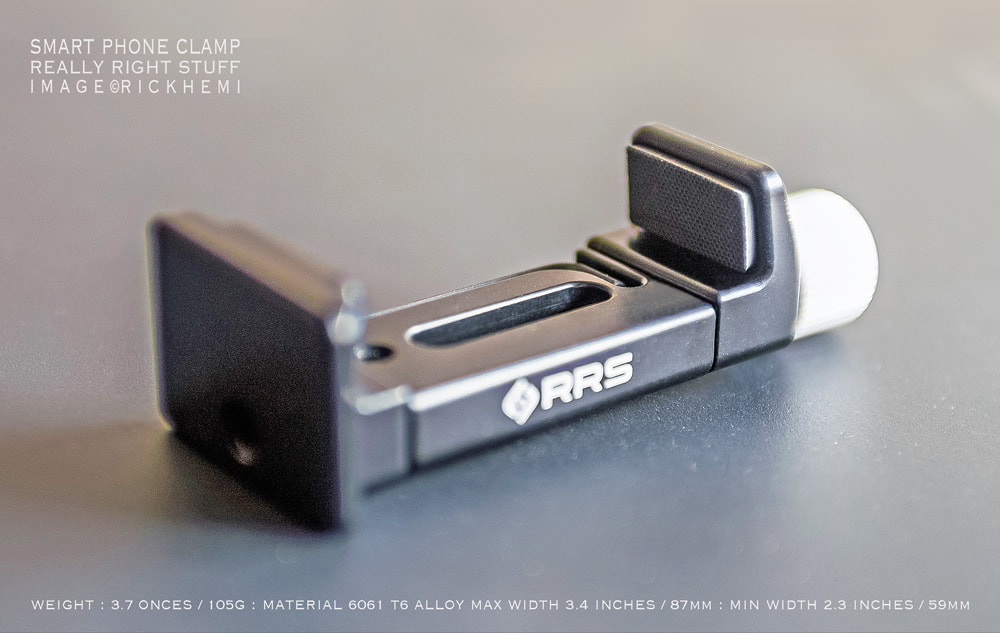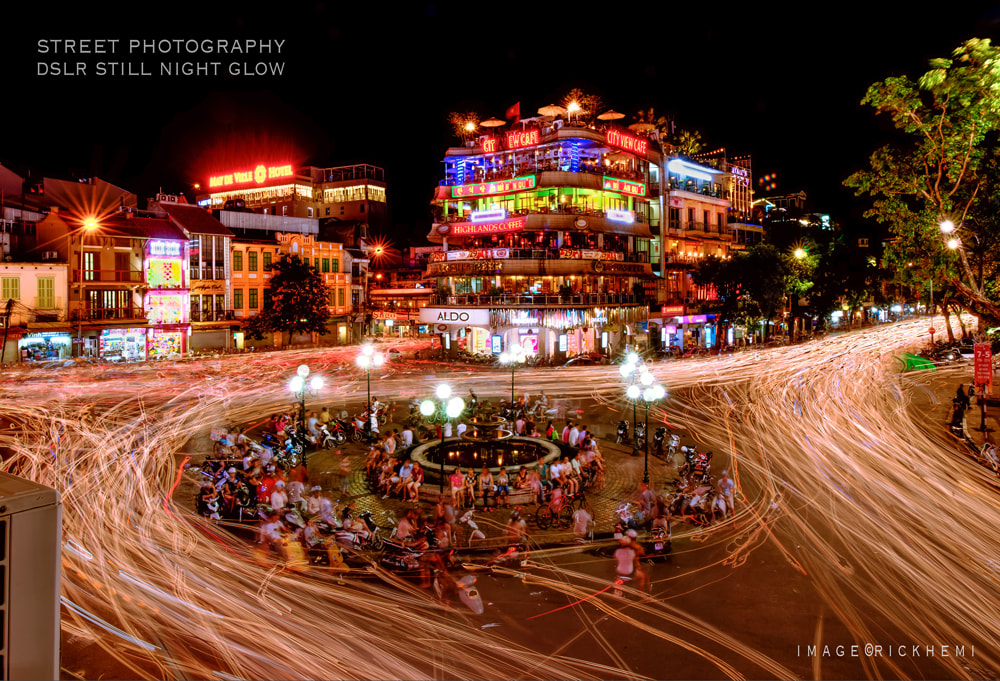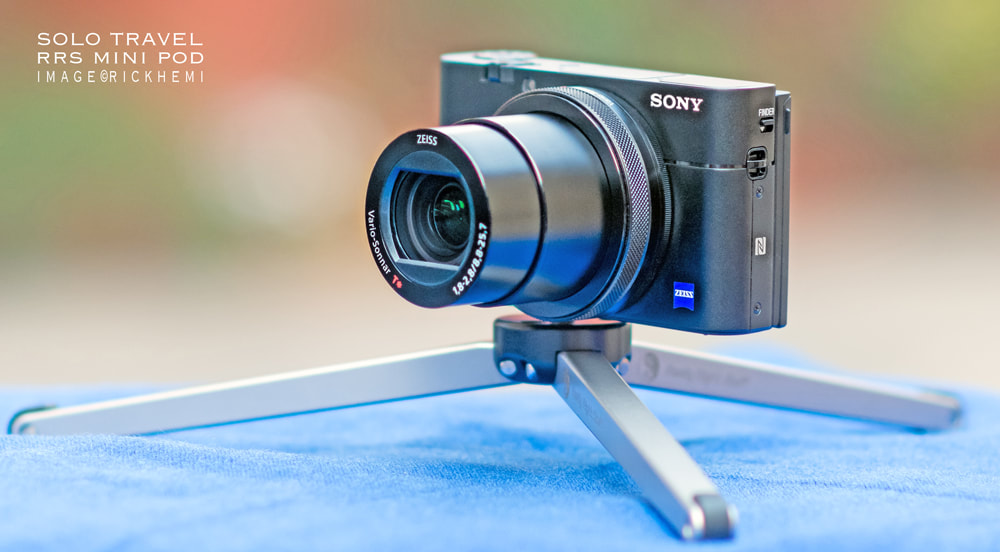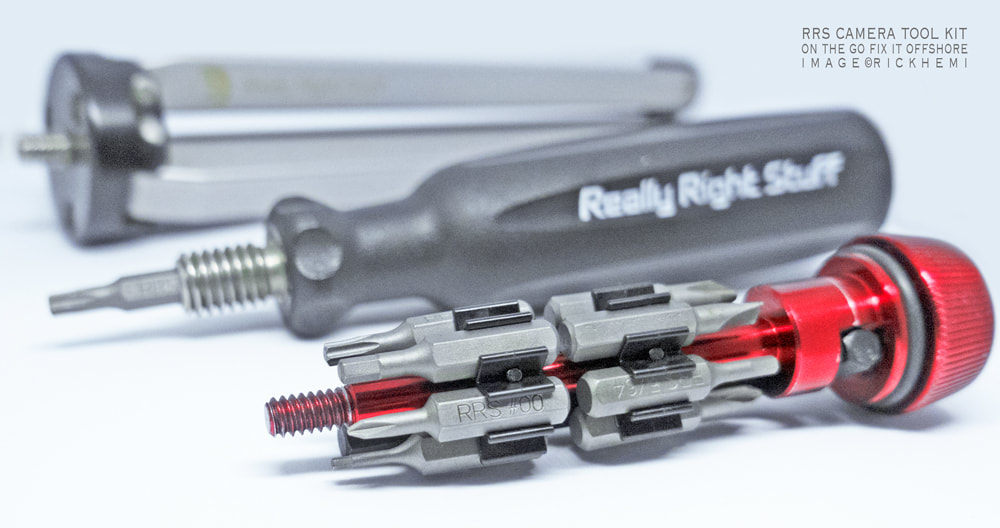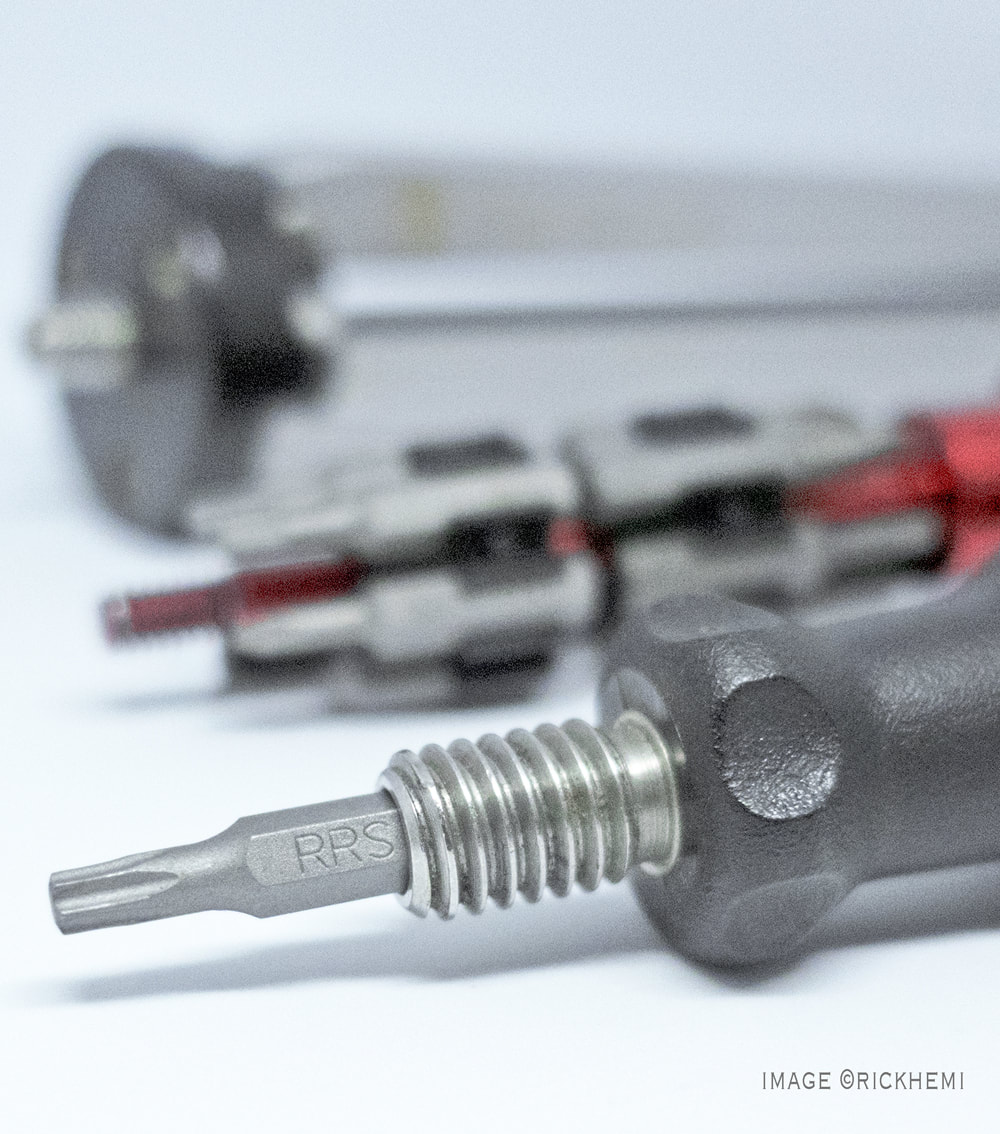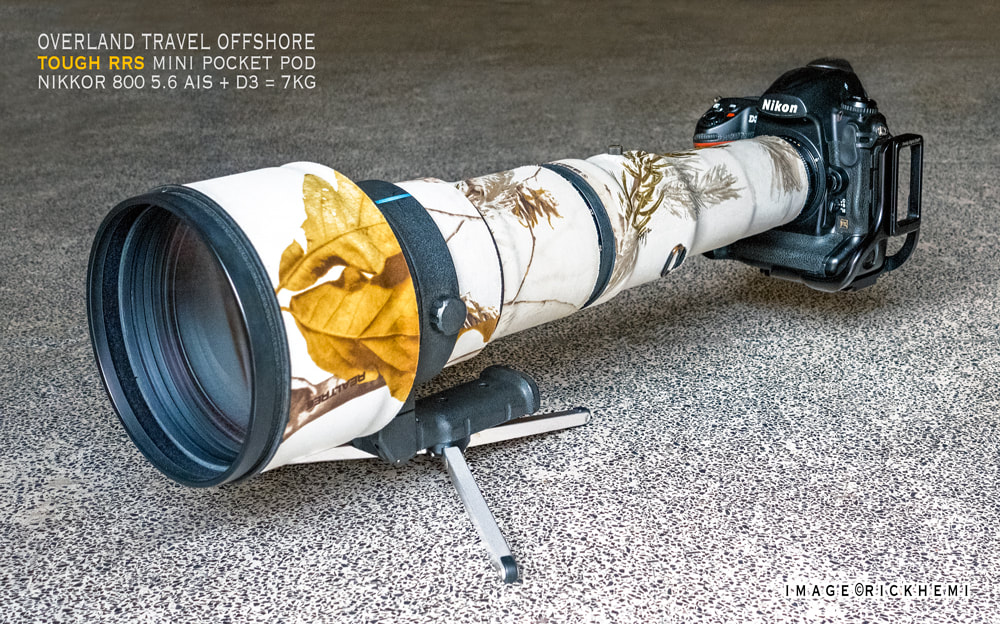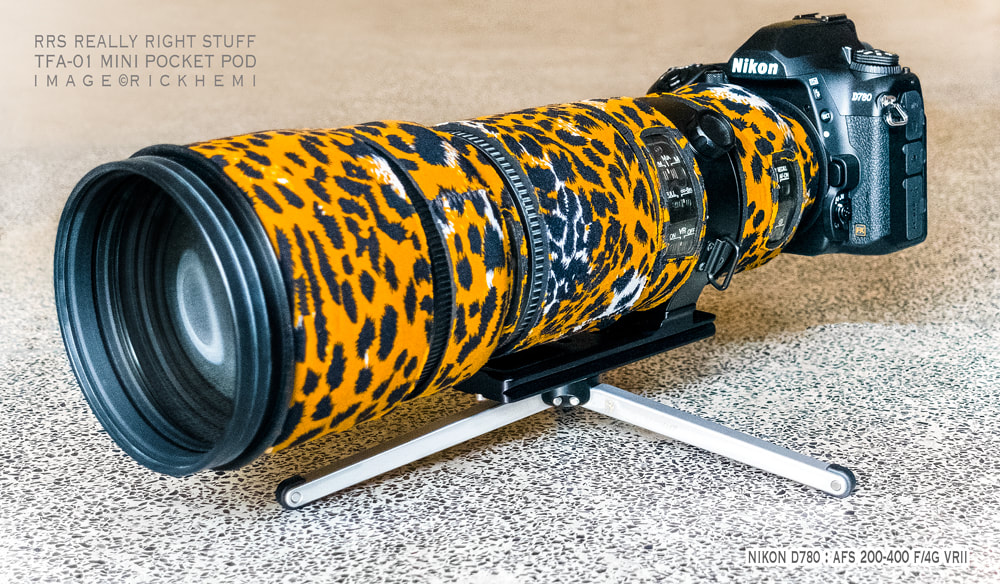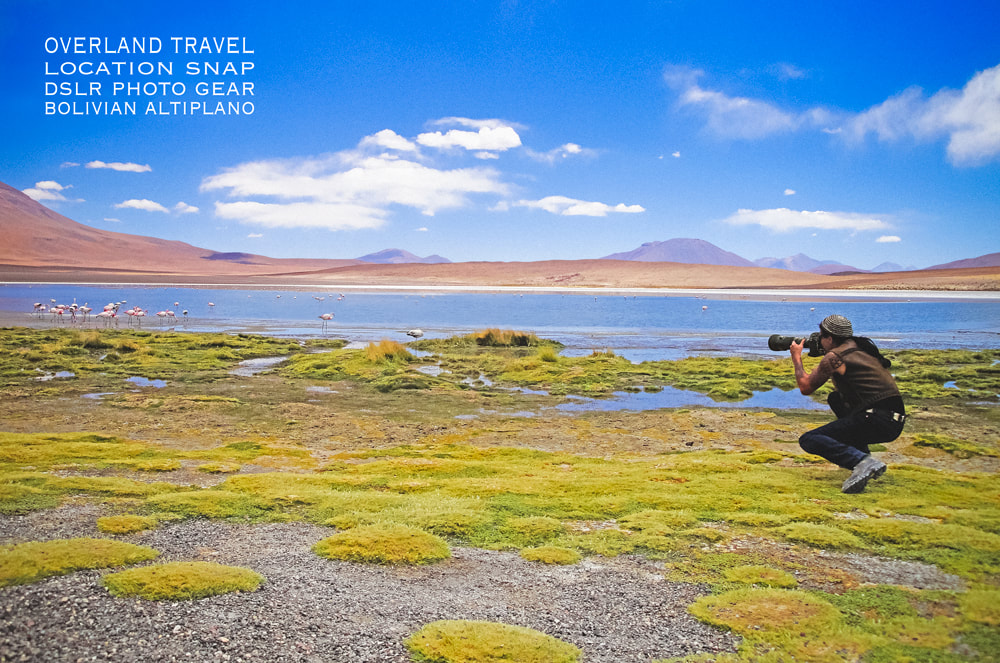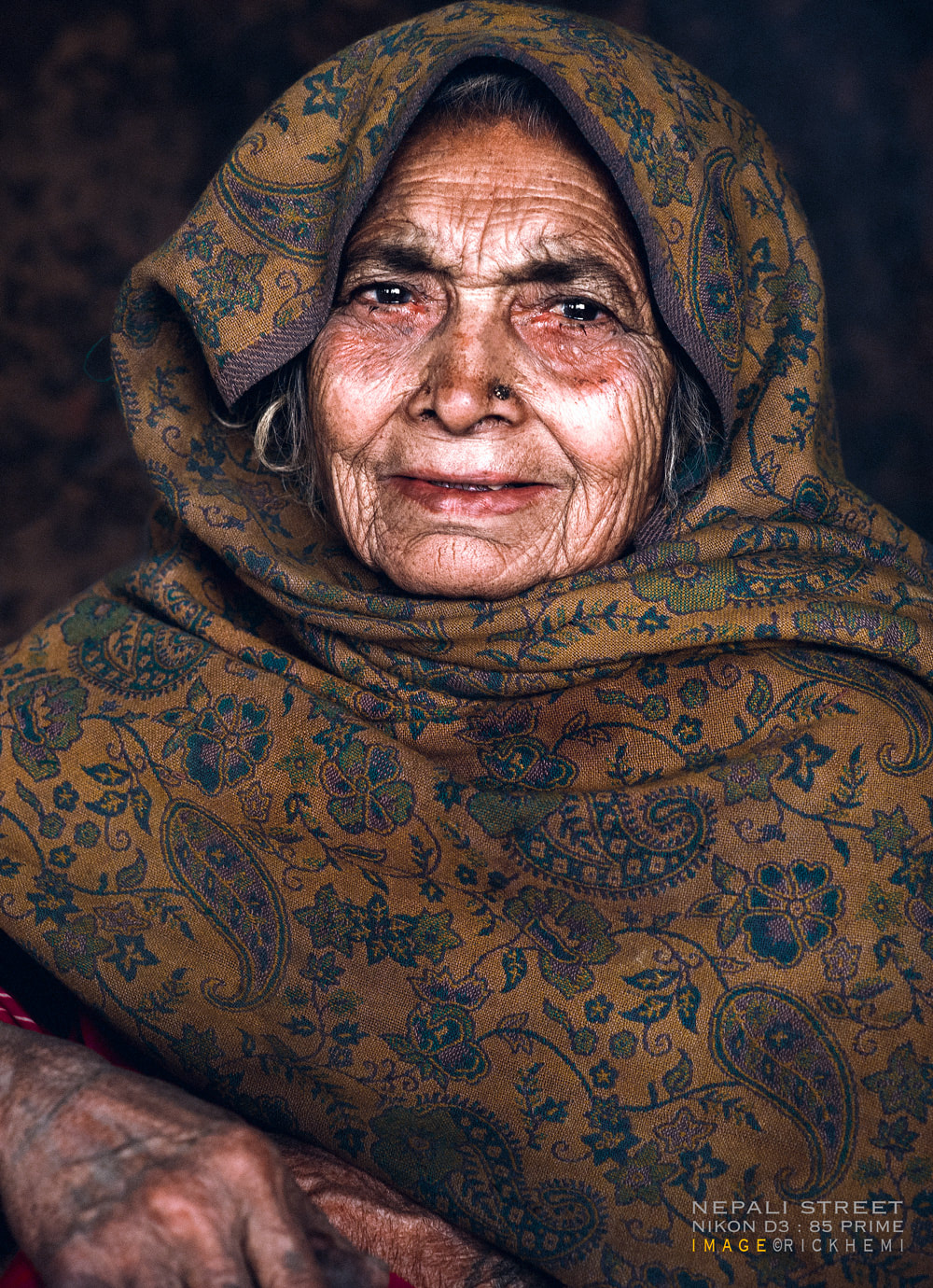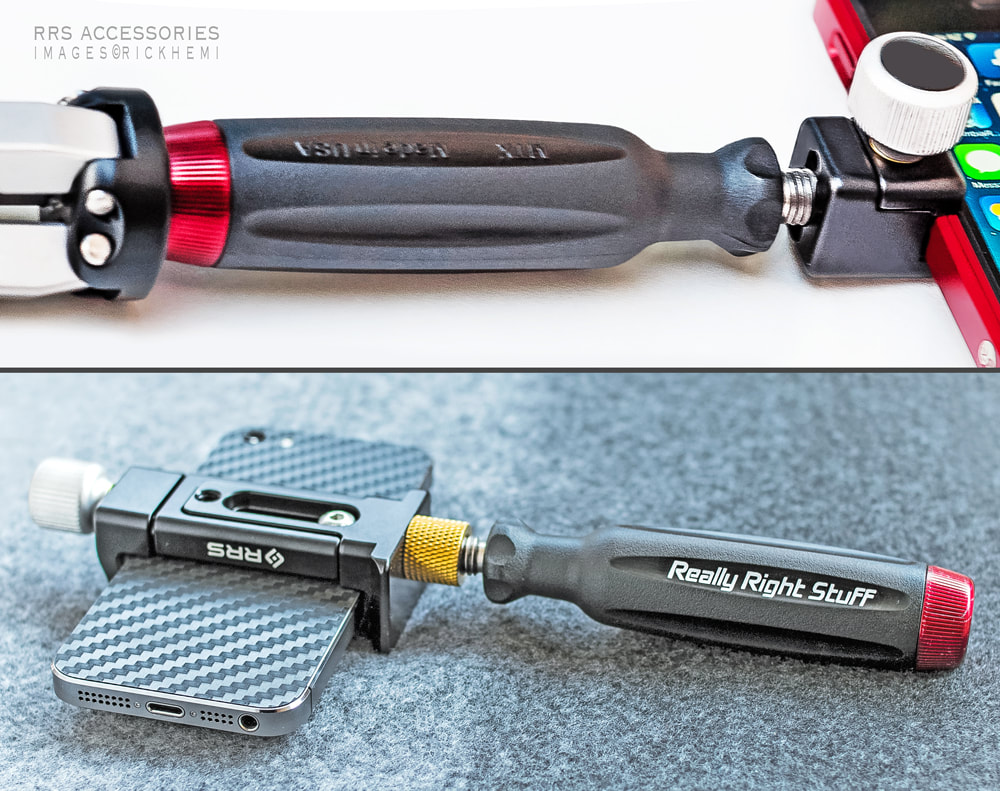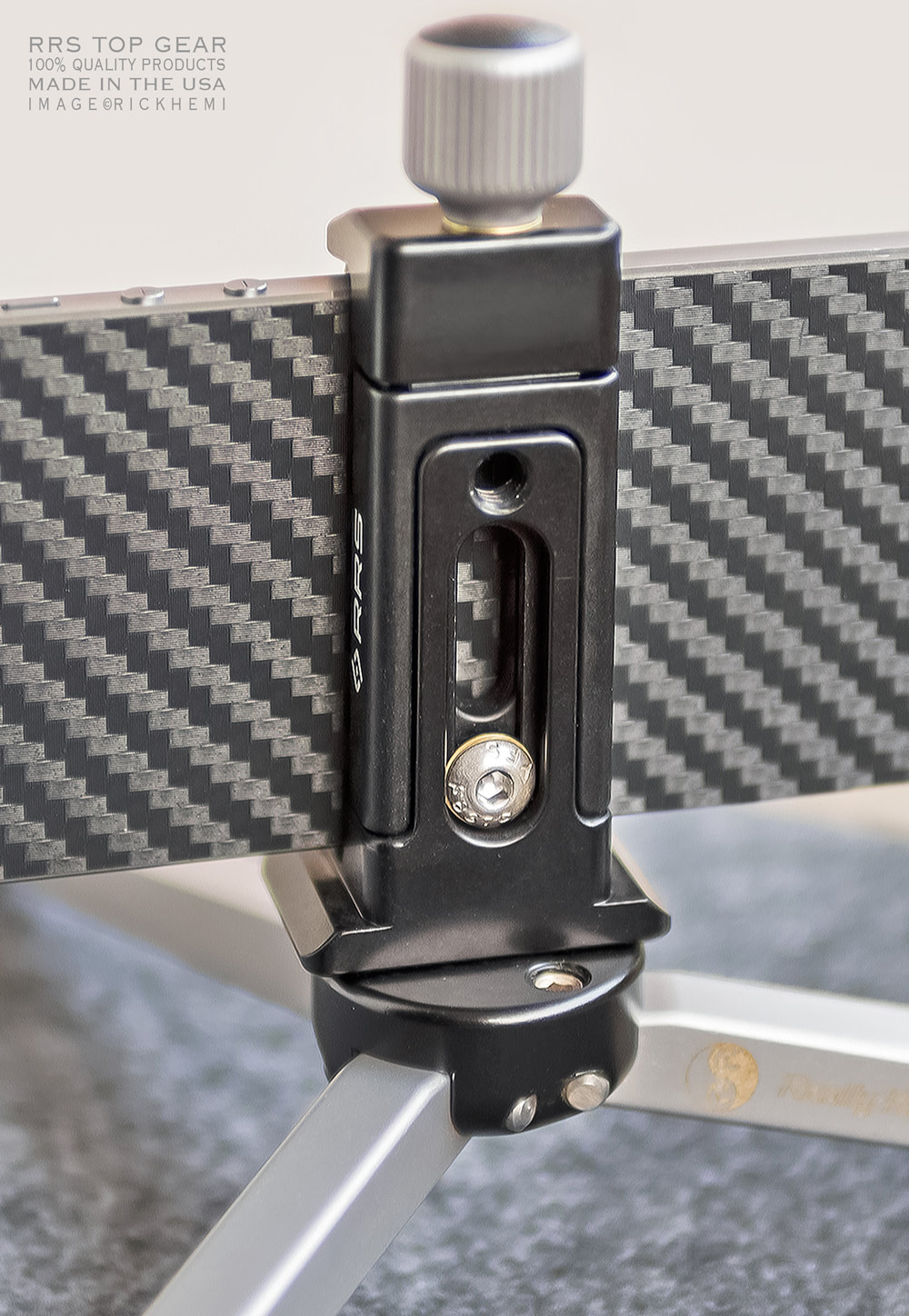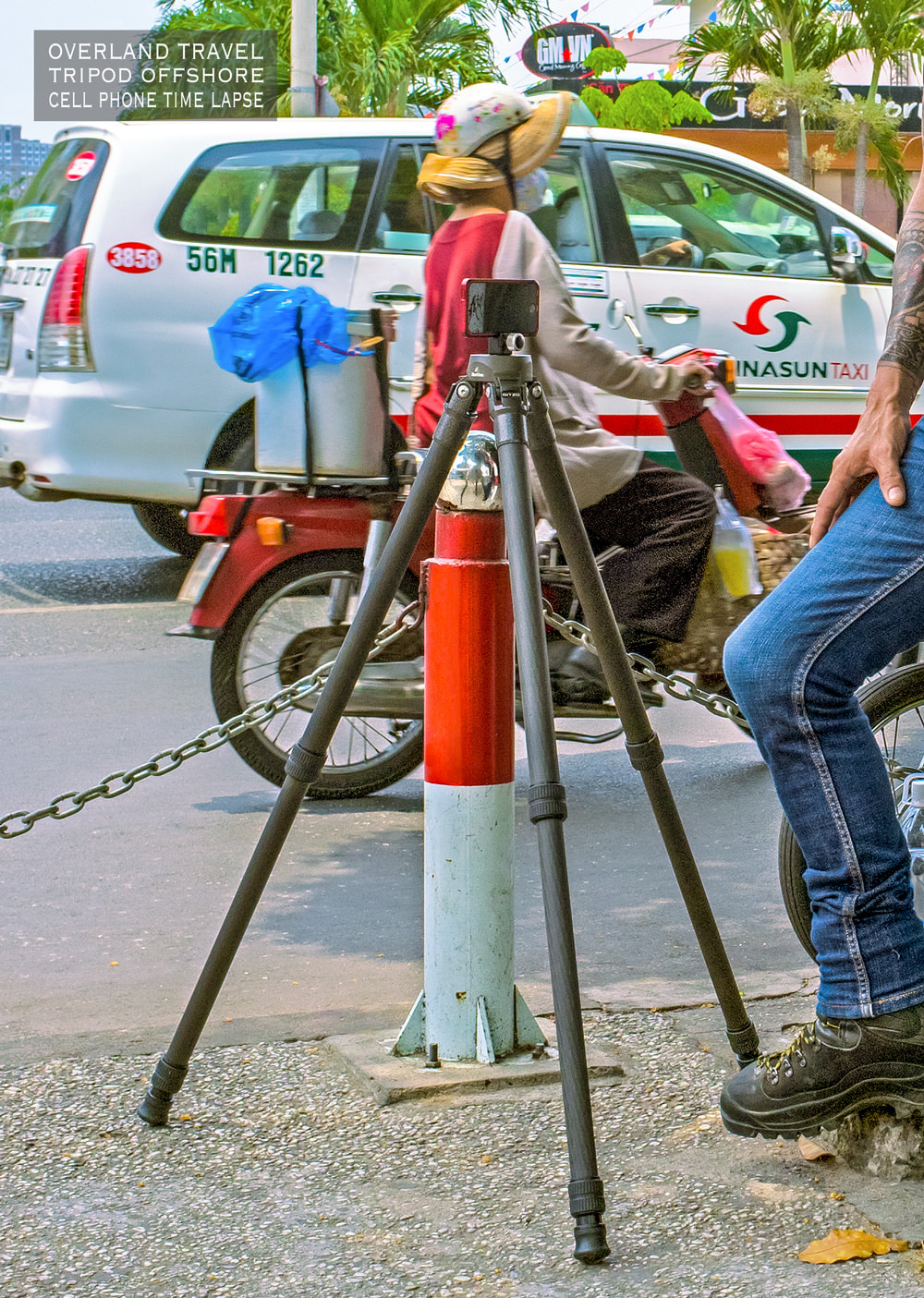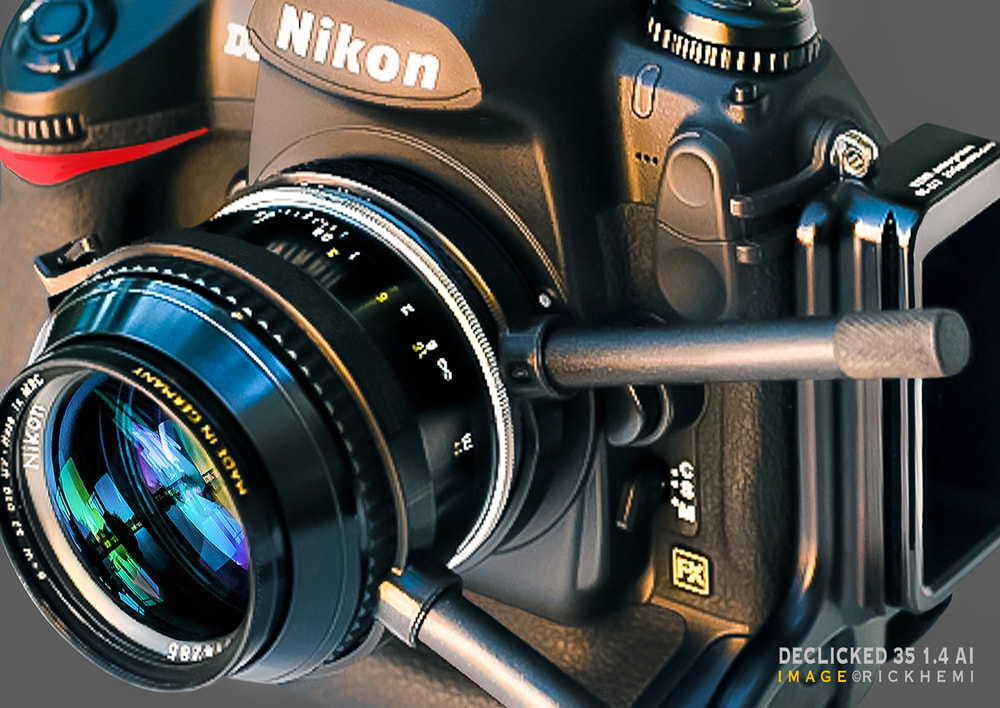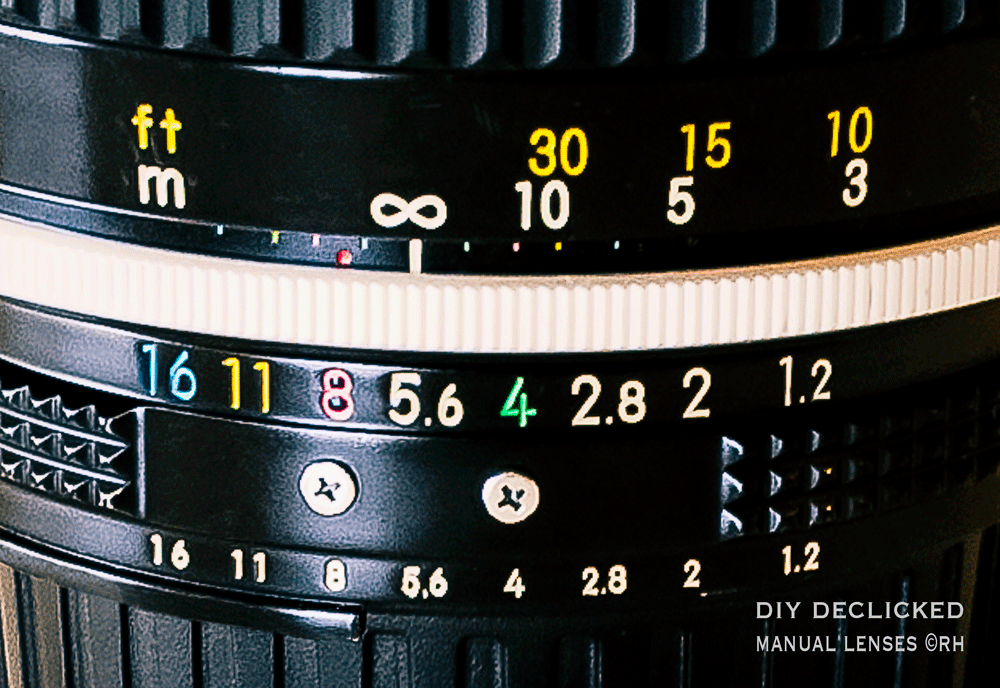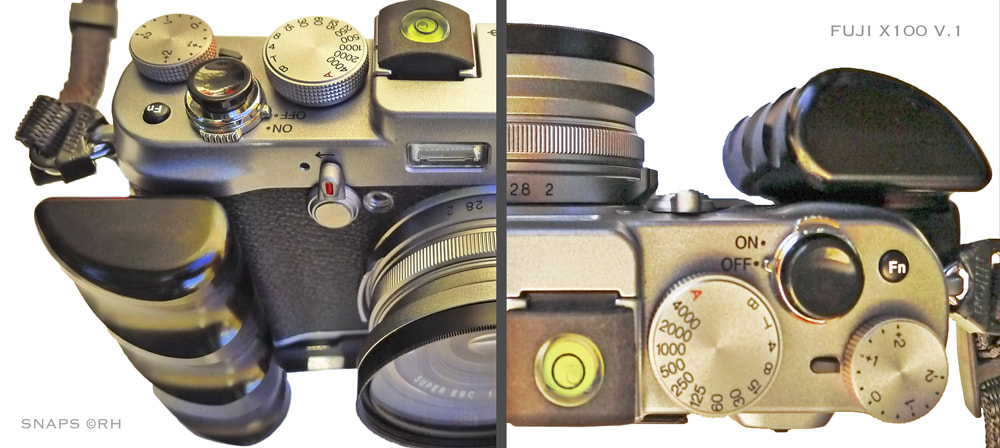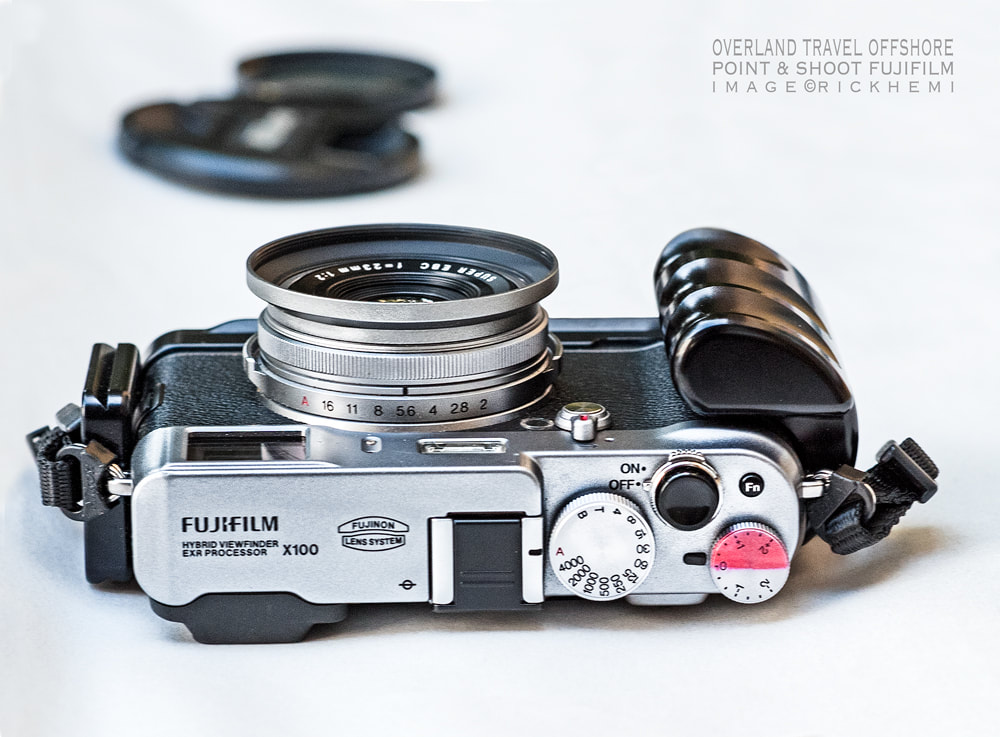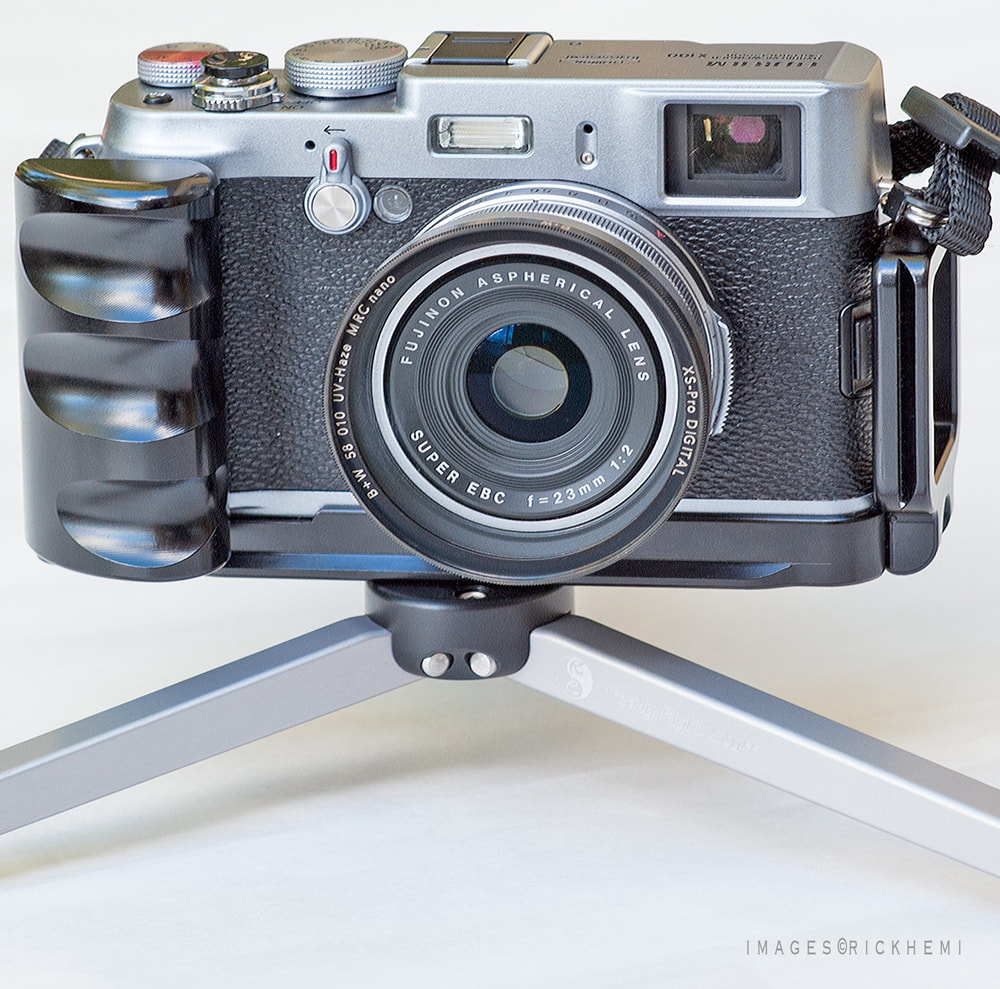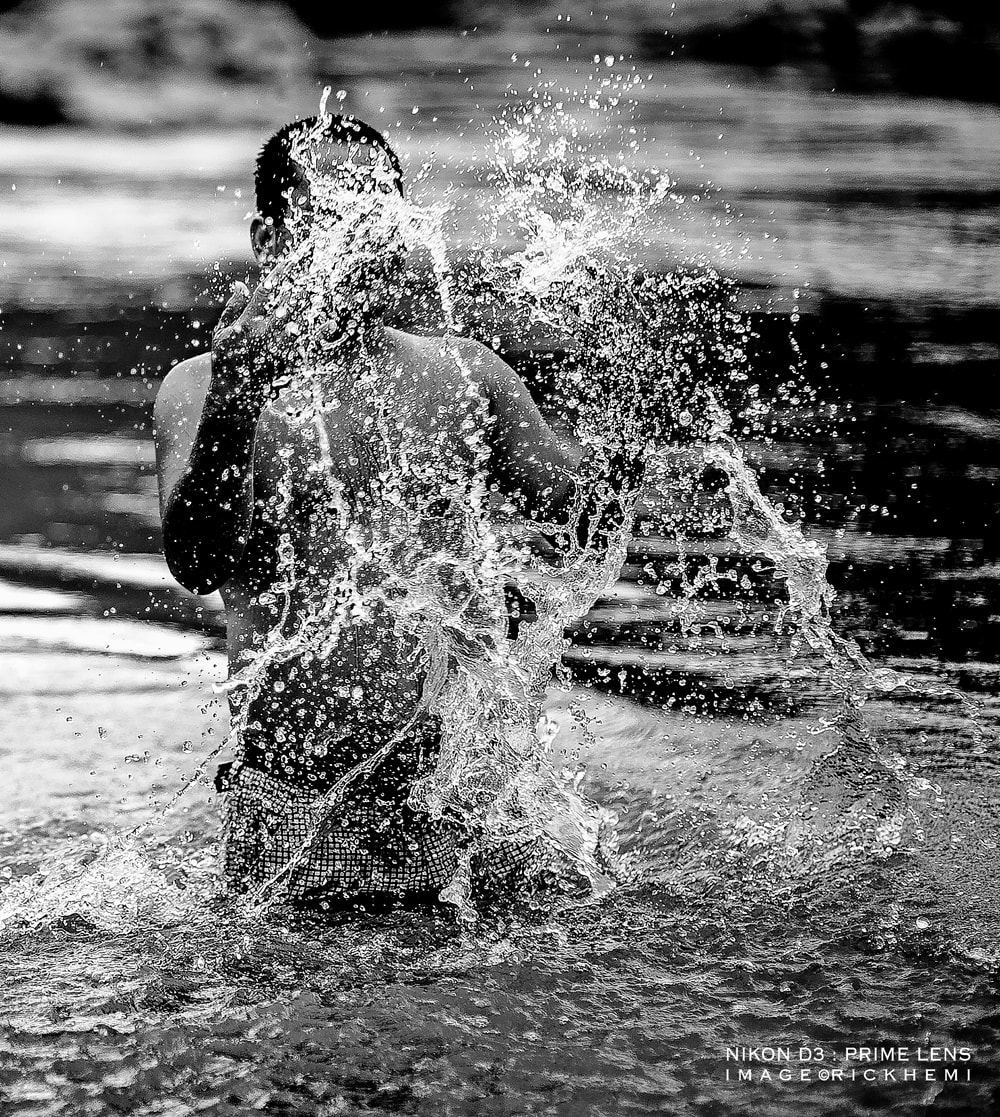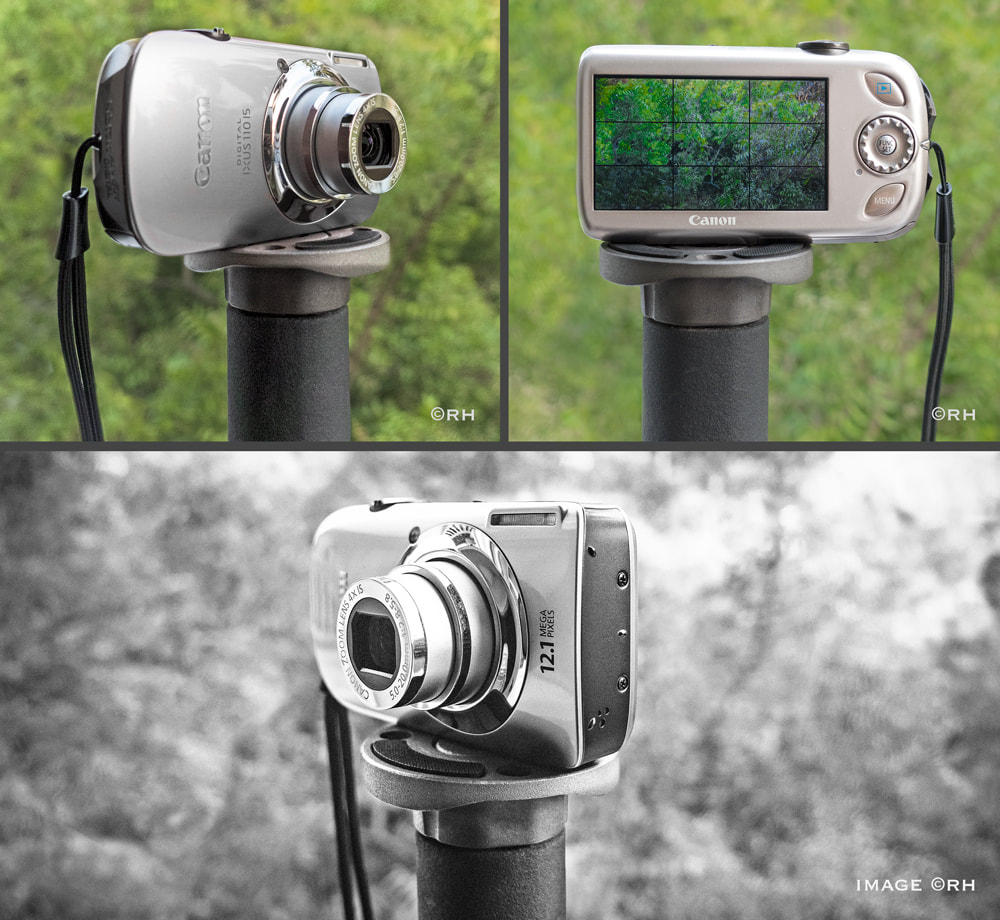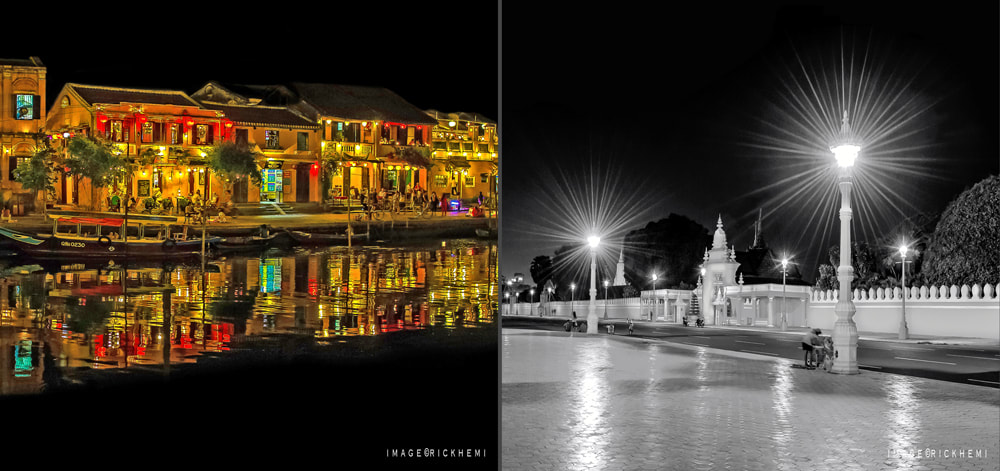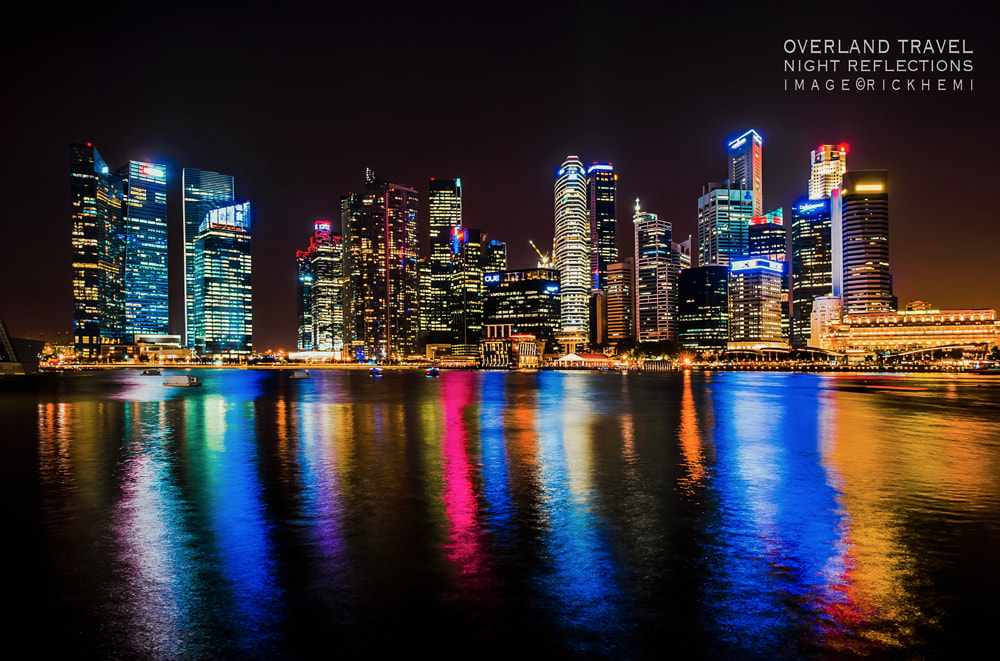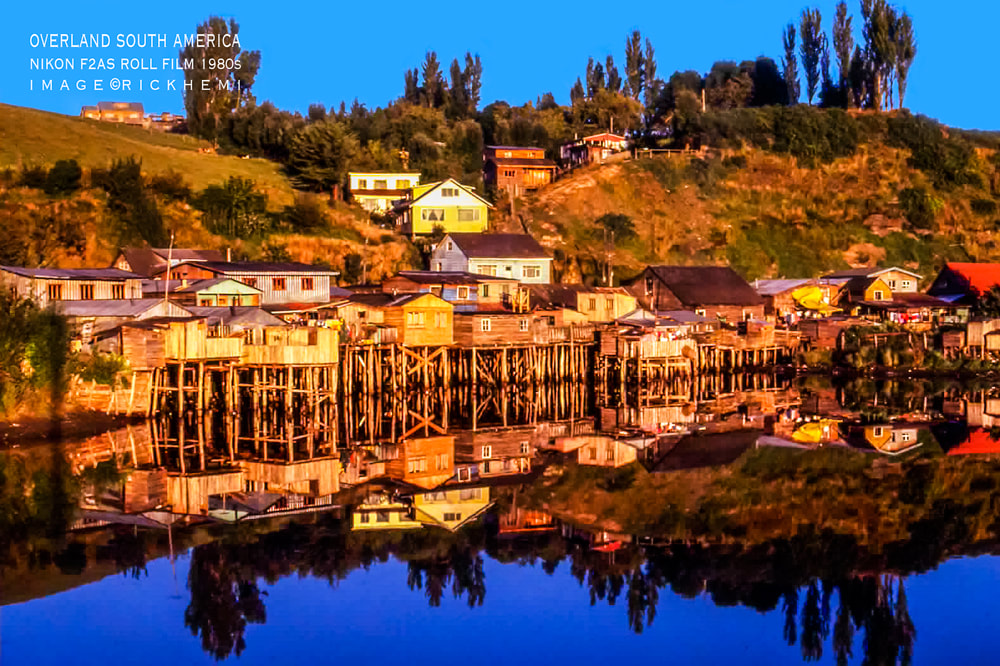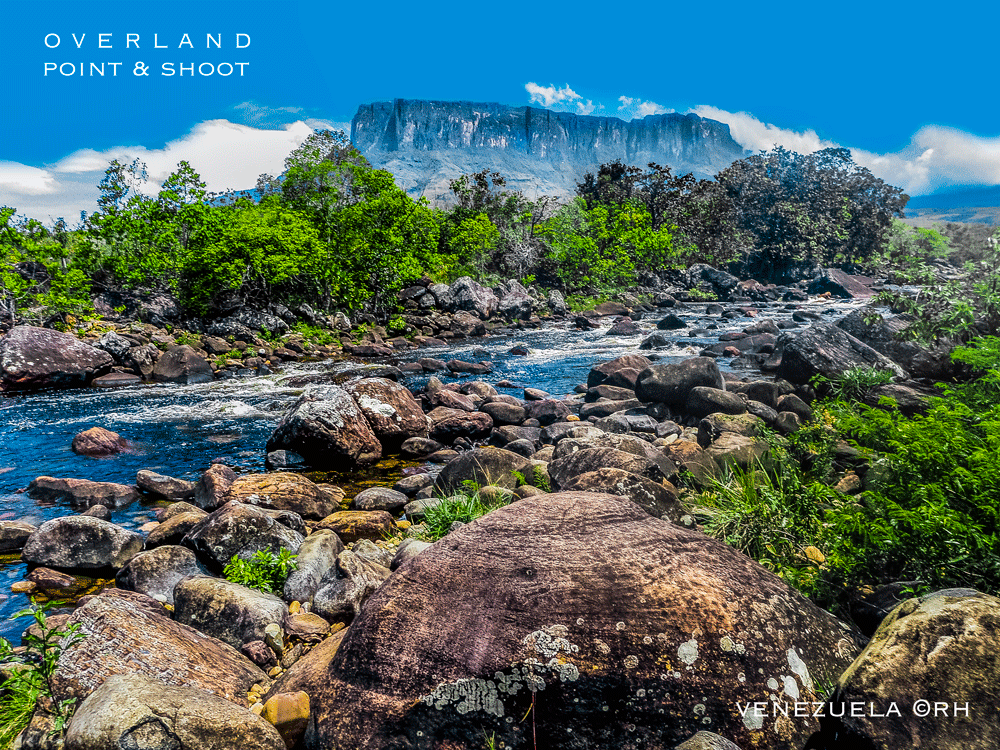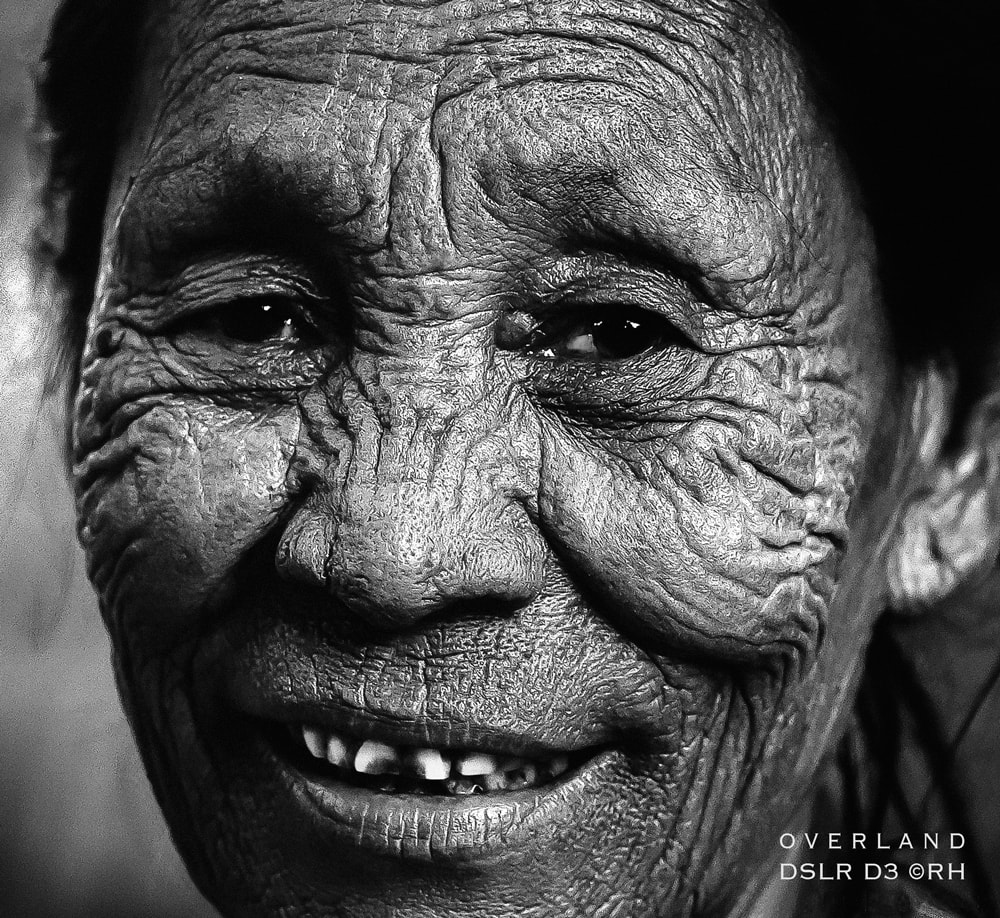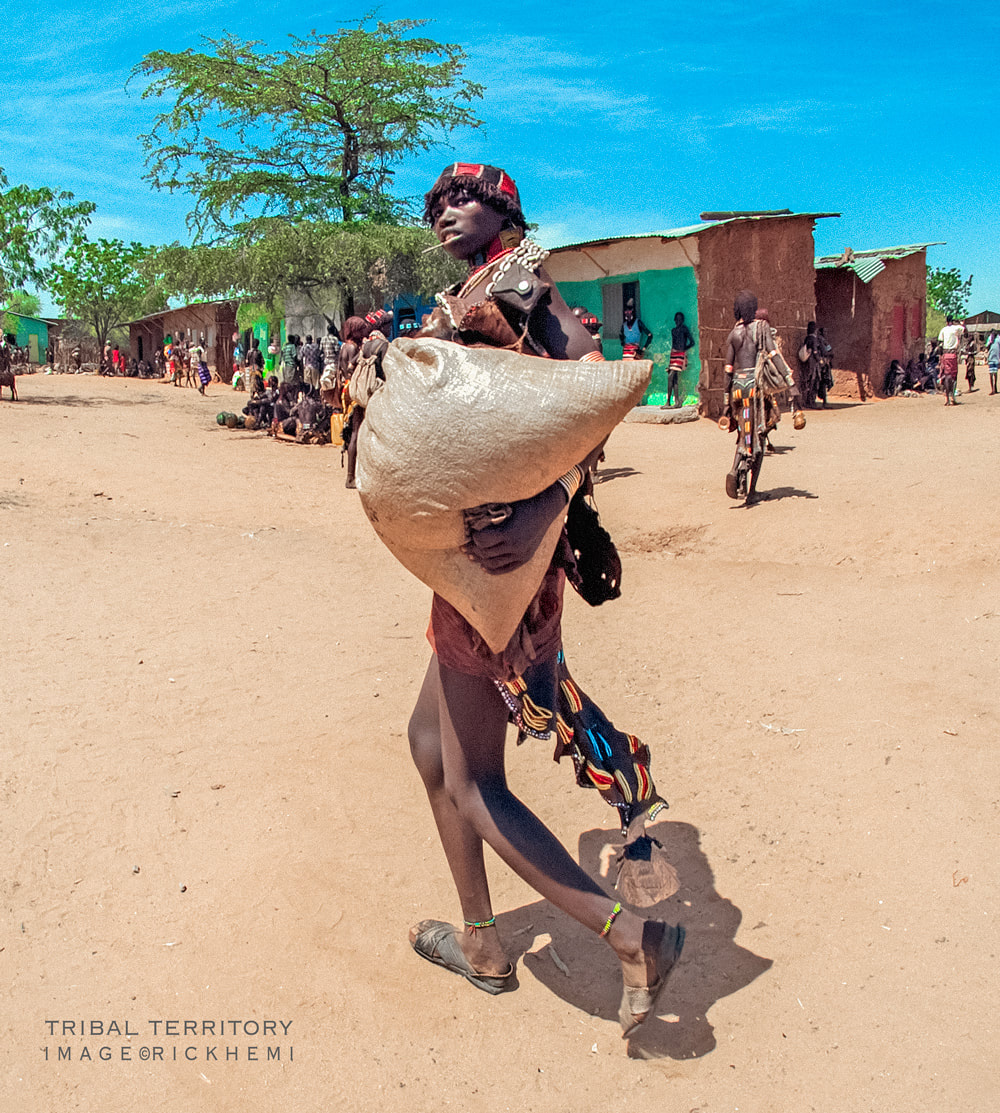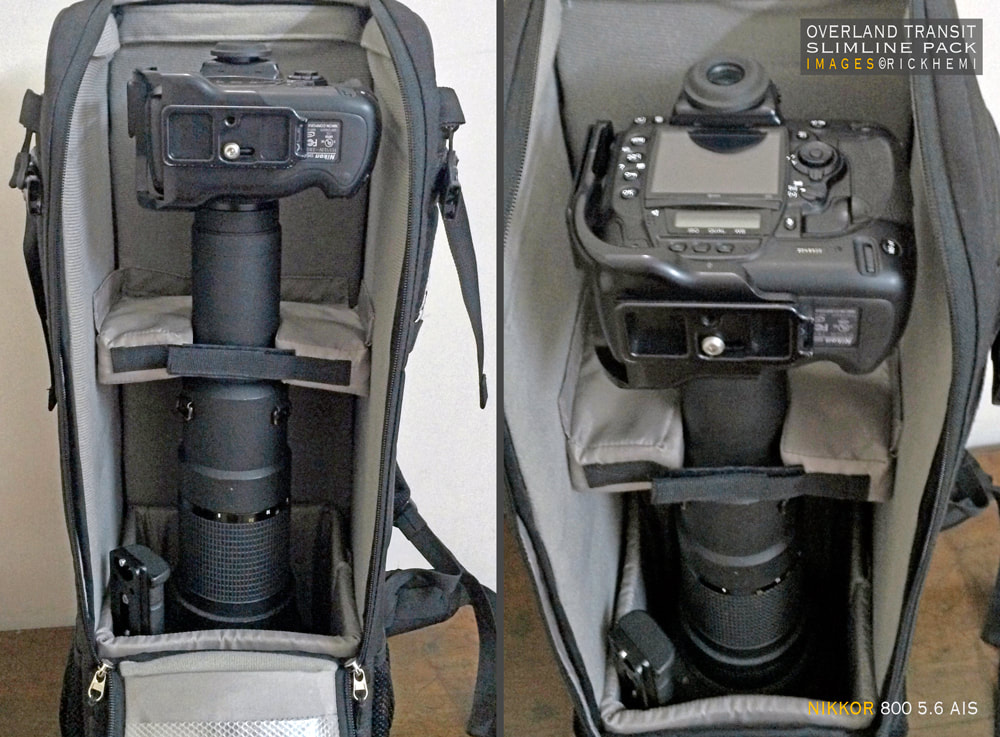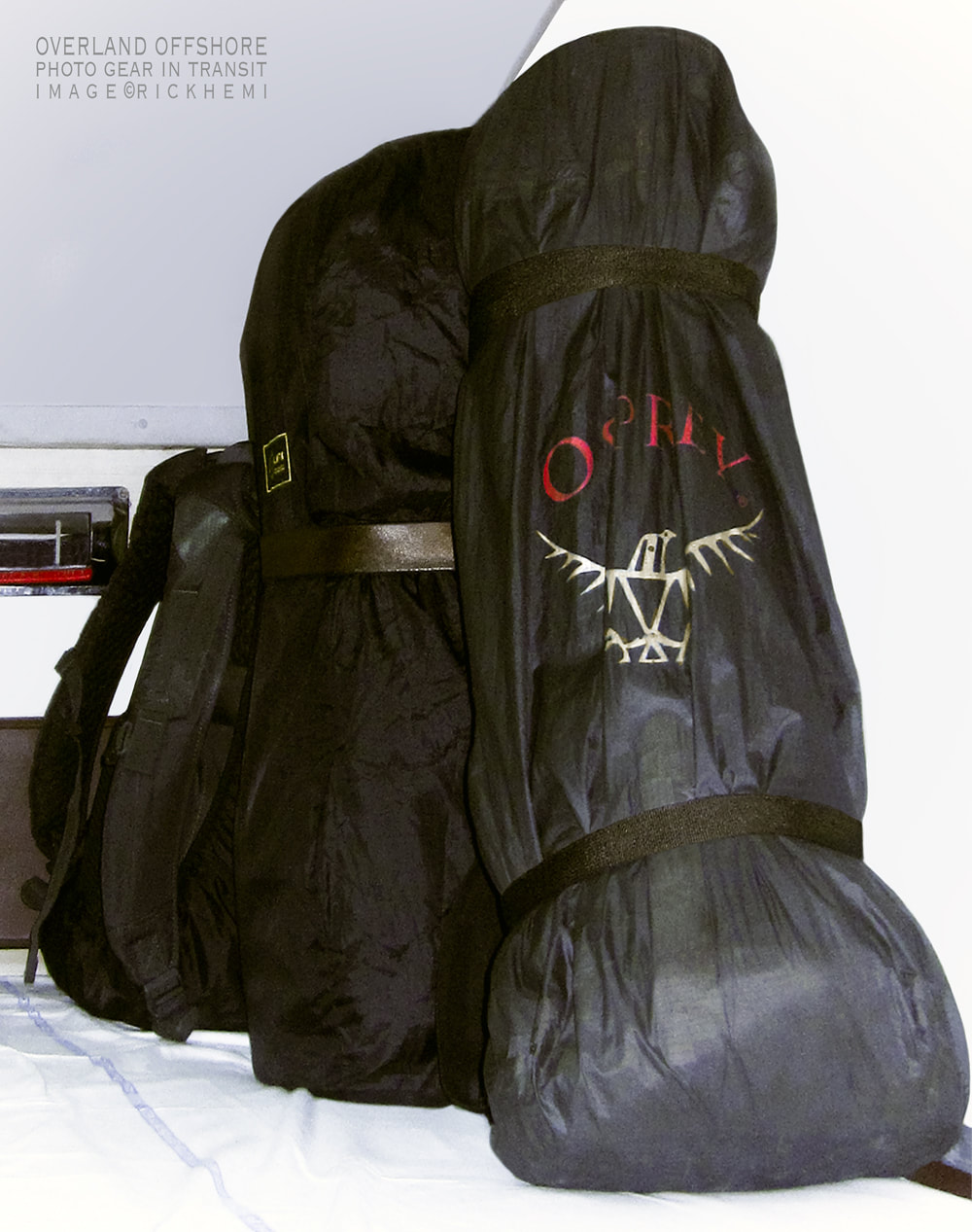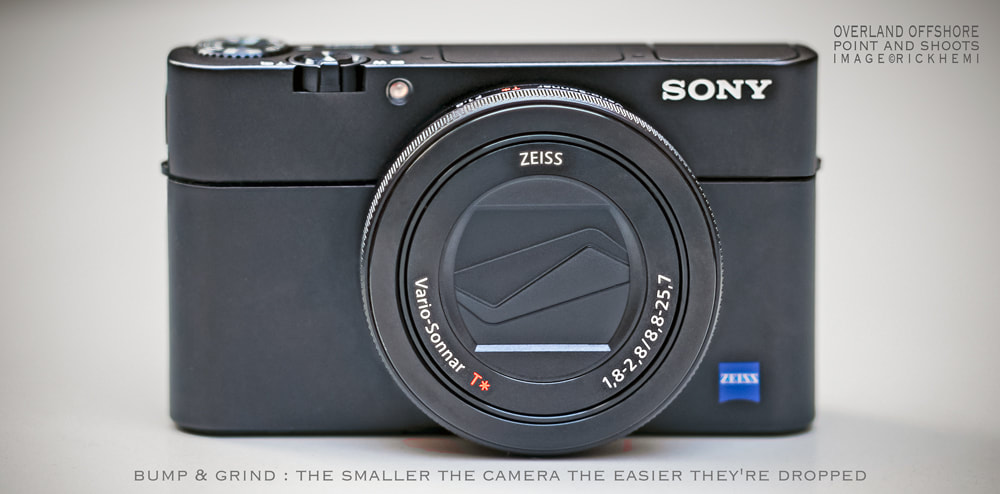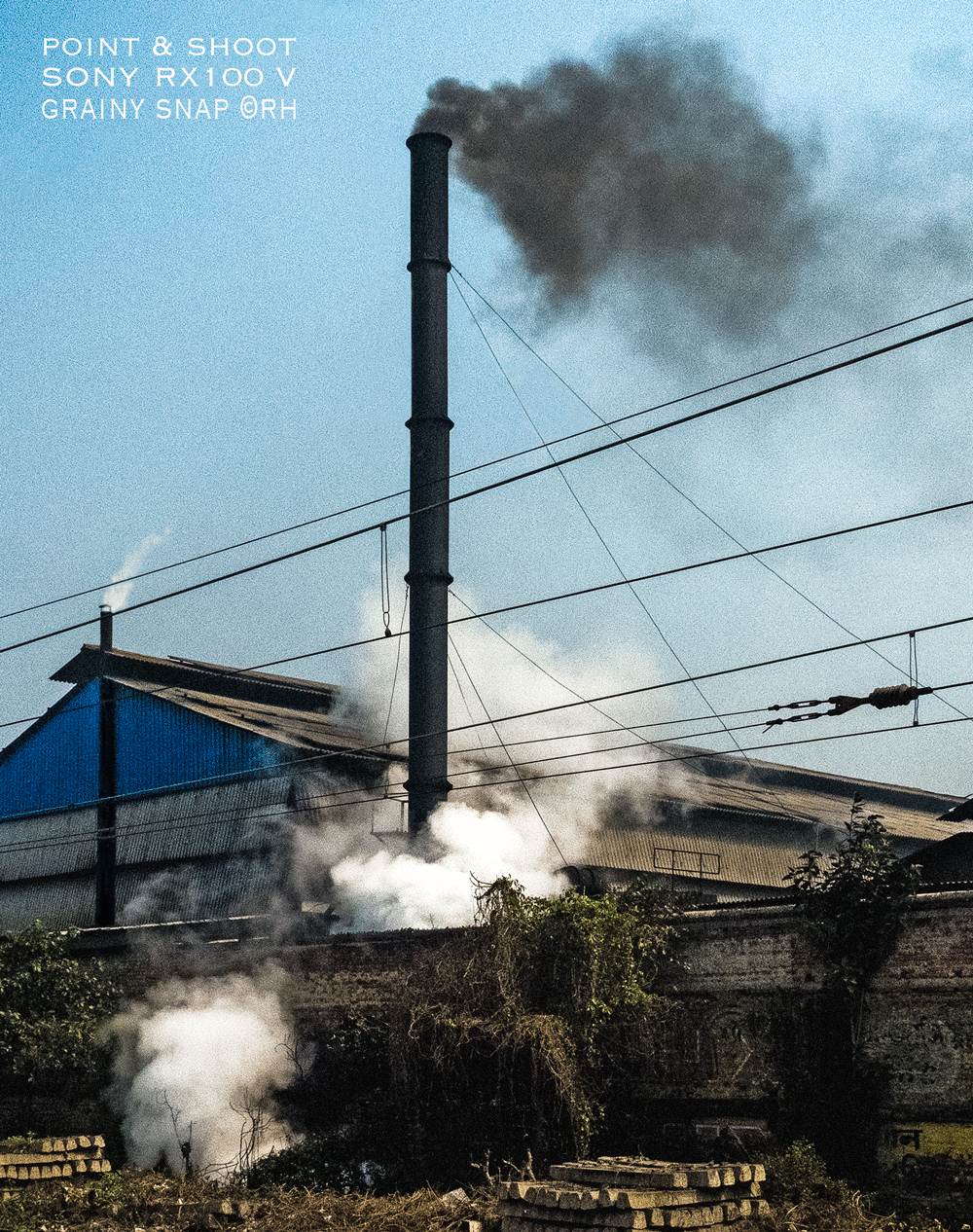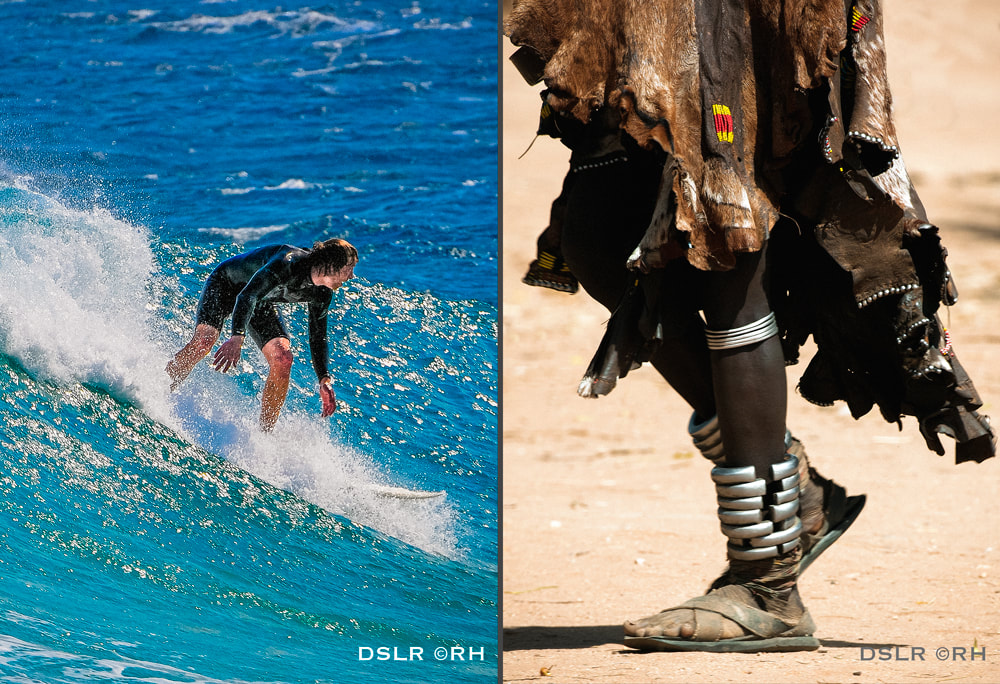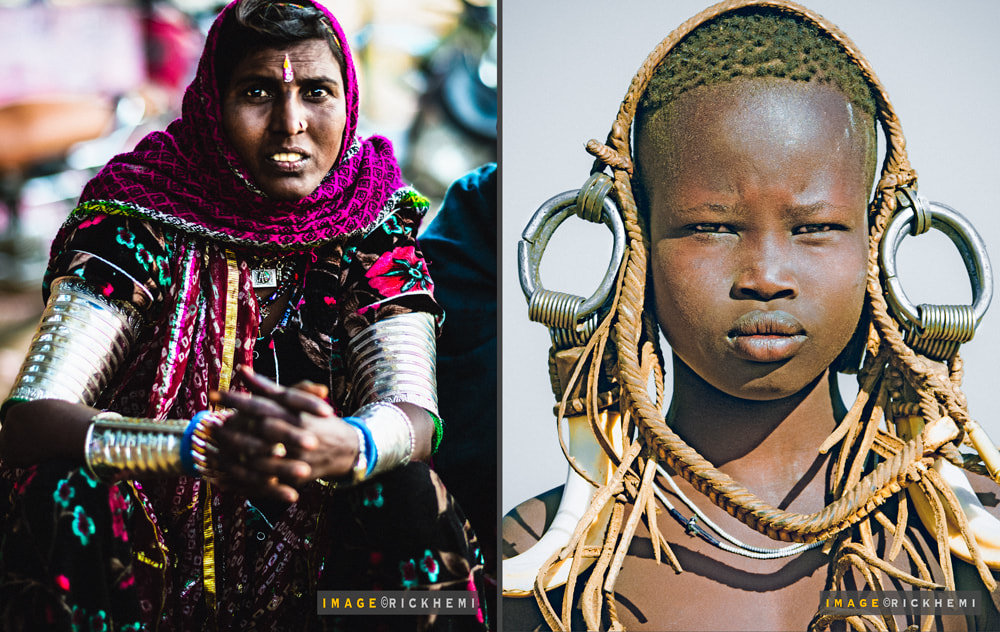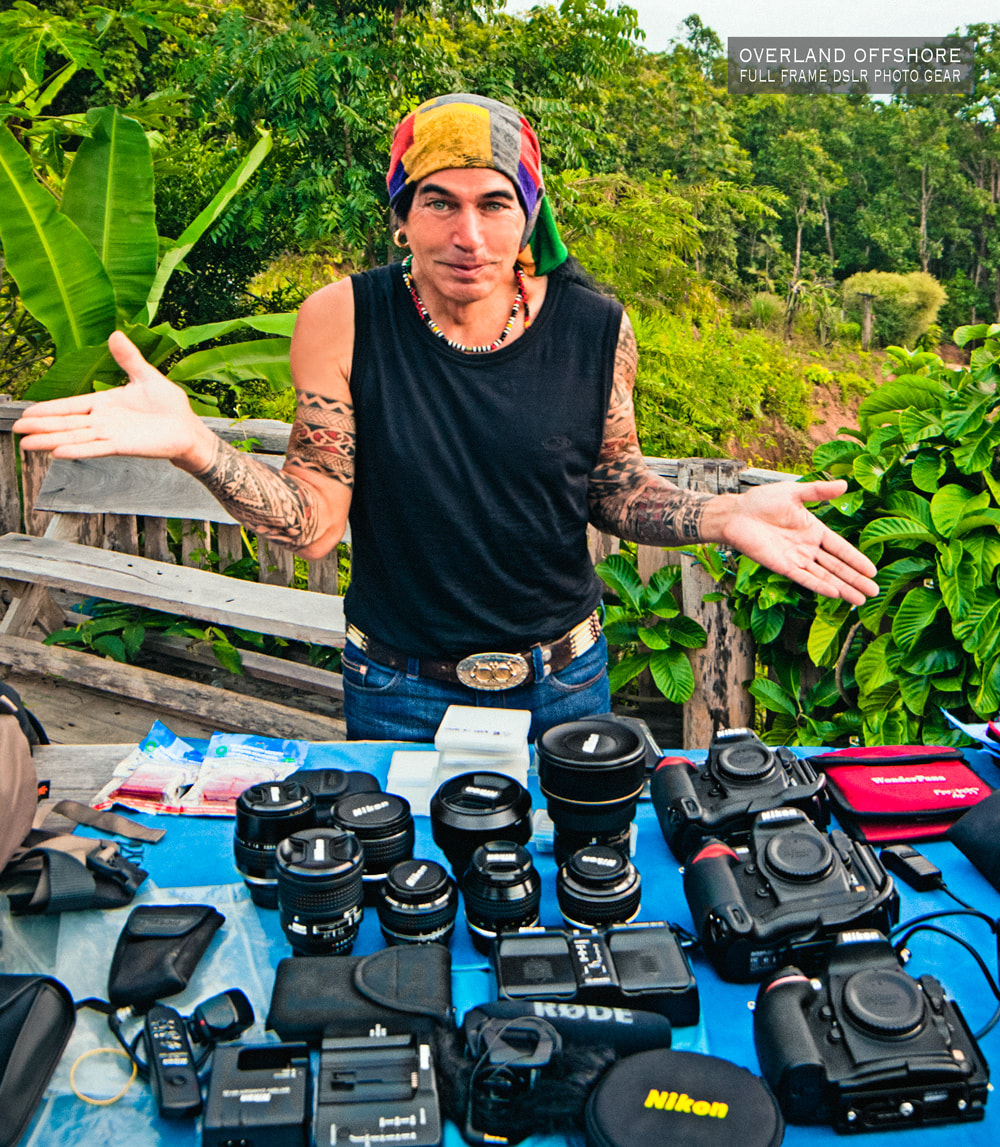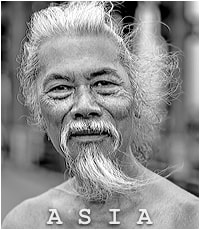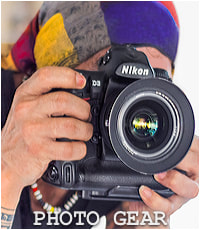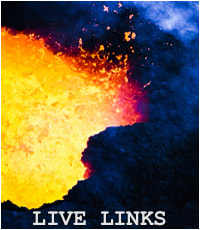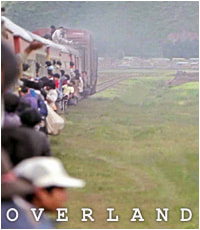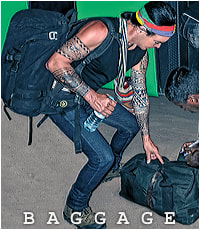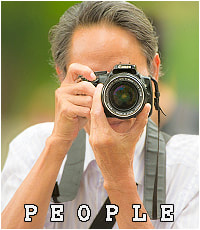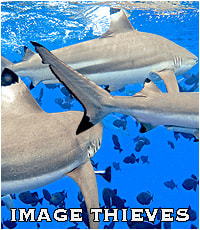Intrepid Overland Travel
Overland Travel - Street Photo Gear Stuff
All Images By Rick Hemi
Rode Videomic V.1
The Video Mic Pro from Rode is a supercardioid condenser shotgun microphone that terminates in a 1/8" stereo mini-jack (dual mono), includes an integrated shock-mount, and an integrated foam windscreen. It can be used to capture audio for camcorders, DSLR, and portable recorders as a source of primary and reference audio. It uses the standard sized shoe-mount for on-camera use and features a 3/8" thread in the base of the mount for easy boom-pole mounting. The VideoMic Pro provides over 70-hours recording from a single 9V battery. Rating 10/10
Nikon DSLR D780 coupled with a 105mm F/1.8 AIS declicked lens, extended levers and Rode mic ready to go.
Smart phones have less positives than negatives when it boils down to all different types of photography. The gen Z generation were born and educated into the smart phone world. The majority of Gen Zers traveling offshore only use smart phones — not real camera gear capturing images. The main reasons, one being smart phones are small and lightweight and two, the connection to social media platforms, posting selfies and addictive swiping. Even though I do use smart phones myself taking quick location snaps and odd time-lapse, smart phone cameras are subpar substitutes compared to using real photo gear. The difficulty of explaining the difference between poor and quality image captures to those traveling offshore only using smart phone cameras, is not worth the time and effort.
In saying that, the smart phone consumer industry has more than enough quality made accessories for those choosing smart phones over real photo gear. Following links are quick examples using real camera photo gear. Bird and wildlife photography : Street photography : Landscape photography : Fashion photography : Sport photography : Astro photography : Game park photography : Night photography
We assume anything newer designed replacing older stuff is of better quality — Wrong! Actually, older photo gear products were made without shortcuts using real glass and metal. Today, most things are made and designed in the cheapest way saving overhead costs, but having the same retail price, or more to earn maximum profit. The above, a B+W 67mm slim C-Pol filter — German made, shows aggressive de-laminating from both glasses. This is what happens when using crappy plastic coatings. This problem wasn't heard of especially by reputable companies, like B+W, that were known for their top quality made products. The newer is better isn't what most think. This filter is only one product with design flaws that have now become common with anything made in the last decade — Buyer beware.
Below, an Asus phone attached to an RRS clamp holder, mounted to an RRS hand holder extension on an RRS mini pod.
|
|
|
Time-lapse captures using smart phones is quicker and less expensive than anything else on the market. The below still image was taken using Nikon full frame DSLR photo gear.
Overland Travel - Solid Quality Pocket Pod
You get what you pay for, solid CNC billet machined RRS (Really Right Stuff USA) mini pocket tripod.
RRS USA, are well known for their innovated designs when it comes to photographic stuff. Their ultra-mini tripod is one of them, precision machined to perfection. The mini-pod can handle the weight of DSLR bodies, if need be (I've personally tried it). The extension handle comes with an inner removable tool bit holder with different precision billet bits to disassemble lenses, and anything that needs re-tightening. This is a great accessory for any overland transit journey through continents hand-holding taking stills and videos out the windows of moving bush buses, and on the back of trucks without dropping stuff. Rating 10/10 Really Right Stuff website
Are you tired of wing bling made junk falling apart? RRS (Really Right Stuff) designed products won't let you down.
A Sony point and shoot mounted on an RRS mini tripod. The Sony RX100 VA was recently tested in extreme subzero temps with the following results. Quick rapid battery drainage was an issue, a battery bank was used instead. Forget about capturing quality night-snaps if concerned with grain - lots of it. Required settings should already be pre-set. The Sony RX100 (all models) are non-weather sealing. This makes the RX100 models vulnerable to dust, dirt, snow, and humid conditions. The RX100 does capture great daytime images and video. The RX100 is a slippery little critter. If dropped with the lens opened (or closed), the camera will self-terminate - as many have found out. Using the wrist cord at all times with an added outer silicon rubber cover will at least keep it safer from knocks and drops. Rating 7/10
The RRS TFA-01 held this 1.7kg combo weight of a D780 and 80-200mm 1:4 AIS lens without dropping sweat. Even with no leg below the front of the lens, there was zero tilt movement. The RRS TFA-01 can hold a ton of weight for its size. RRS has been designing creating reliable camera products for years - Tough stuff made to last.
Now and then precision tool bits come in handy during offshore travel journeys for photo gear. DIY self-repair is necessary when least expected. Tightening loose screws on camera bodies and lenses require JIS tool bits.
The RRS (Really Right Stuff) JIS tool bit kit comes with 10 CNC bits stored inside the extension holder. The holder end cap is o-ring sealed.
RRS - Really Tough Stuff
As always, you get what you pay for. Quality designed stuff comes with a price tag. Cheap wing bling made junk usually falls a part within a few months and should be avoided unless frustration is a favorite pastime. RRS has you covered.
The RRS TFA-01 pocket pod has no problem holding the weight of large heavy lenses. The above Nikkor 800 5.6 AIS and D3 has a total combined weight of 7Kg (15.4 lbs). It is said good things come in small packages. The RRS TFA-01 proves that accountability well past one's imagination. Using heavy photo gear on mini pods, is only done on rare occasions when there's nothing else to use at certain locations. Design and Reliability Rating 10/10
Traveling light as possible with minimal stuff overland offshore is what we all wish for, but in reality this never happens. I've had the same baggage weight issues since the first flight out of New Zealand, onboard a dinosaur DC10 in the late '70s. Some travel overloaded with clothes, perfumes and cosmetics, while others like myself travel with a pile of camera gear. Through the decades nothing has changed. Street photographers offshore all have one thing in common - they use real camera gear to capture their shots. Knowing what works and what needs replacing, is personal choice. The question is, why replace camera gear that keeps on functioning capturing perfect still images. People follow trends, people want to keep up what others have even though they really have no reason to. Most people don't want to be seen using outdated cameras, even though there's actually nothing wrong with it.
The Manfrotto MTPIXI-B minipod has a rotating ball head compared to the RRS TFA-01 fixed head. I've used both models with different cameras with the same results — excellent. My personal pick from these two designs, is the RRS because of its all metal construction.
The below examples are what would probably be termed obsolete in the 2020s. I still use older model full frame DSLR cameras periodically for random street portraits and landscape stills with positive results. Even a reliable 2009 ultra mini Canon Power Shot made and assembled in Japan. The Canon point and shoot hasn't missed a beat taking location snaps and video for more than 14+ years. More on this little gem further down the page.
The Manfrotto/Bogen 695 monopod is also another oldie. The 695 monopod has been successively used through the continents as a secondary support backup. I directly attach cameras to the #695 without quick release attachments or ball heads. The bottom extension leg was removed. The 695 has been used with cameras attached out of moving bush buses capturing snaps across Africa and Asia. The 695 is handy for the need of quick stability with heavy lenses at locations when tripods and rest bags were required but impossible to setup. The 695 gets a 10/10 Rating for construction design and long term reliability. #695 Monopod Reviews
Get A Grip - This reliable Manfrotto Bogen #695 has never let me down.
Some photo gear stuff just keeps on working for what it was designed for year after year. The Nikkor AIS manual focus lenses, and D3/S bodies I use for still photography in the 2020s are proof of that. The Manfrotto/Bogen #695 monopod gets the same credit. Design, functionality and construction is what determines long term reliability of any product. Traveling overland across the heartland of Africa, or coast to coast through South America and Asia has zero mercy for cheap made camera junk. Again, why replace any photo gear that's survived traveling the hard yards, worked and functioned every time it's been used, and still works perfectly a decade later? This is one reason why I'm using some of the same old stuff I still trust without the need of replacing it. Naturally, everything made has a use by date, although most quality made products, if serviced, maintained and properly protected during rugged overland journeys will remain reliable ready to use well past their expected expiry date.
Manfrotto 695 - Solid Extension Levers : Dual Camera Threads : 60mm Diameter Base : Quality Hand Grip
Below, what I've been using for over a decade and still using for DSLR photo gear in 2022. The mix and match of reliable tripod stuff plays an important roll when using it offshore. When things bust and break, it will always be when they're being used somewhere in the middle of nowhere. Forget about replacement spare parts. Delivery can take weeks with some replacement parts obsolete or difficult to find. I'm not your tripod Guru, but choosing the right stuff for long-term overland travel journeys should be tried and tested thoroughly at home base before departure. This gives the chance to become familiar with tripod gear, and to replace, swap, and modify anything in advance.
My own tripod gear weighs in @3 kilos (6.9 lbs). It includes a Gitzo series 3 CF leg set, Markins TH-300 center plate, and Wimberley WH-200 Gimbal head and Arca plate. The combo has worked consecutively for all types of photography, and has over-landed crossing countries and continents on board rough as guts bush buses, packed out vans, on the back of trucks, trains, ships and ferries with zero damage. As I've always mentioned, reliability come first with any design, any make or item - Choose Wisely. More on tripod gear stuff.
Overland Travel - Photo Gear Stuff
I still use the same reliable camera gear - Why waste cash if stuff still works?
Above, location snaps using a full frame DSLR Nikon D3 and 85 f/1.4 prime lens. Capturing people shots, and closeup street portraits with this combo hasn't failed getting great images. The 12MP D3 has been my daylight workhorse body for years with no let down in the 2020s. The D3 and D3S are perfect cameras for still street photography. The only one negative with the D3 is the limited buffer when shooting continuous. Hard drive storage with 12MP NEF files don't clog up space. Others out there who also use D3's know exactly what I'm talking about.
In the 2020s, I still use full frame DSLR camera gear capturing still images, the above 28mm 1.4 prime lens is one of them.
Location snap, solo overland using the above full frame lens and DSLR body for many years with no issues.
Solo overland travel journeys through and across Africa, the Mid East, South America and Asia has been on going since the early 1980s.. Traveling different overland routes, directions and diversions, is what overland travel is all about. Traveling offshore with photo gear has also been priority for decades. And using some of the same photo gear that's already completed many years of overland travel mileage. You can't go wrong with made in Japan products.
Solo overland travel using full frame DSLR photo gear captures images like above with manual or auto focus lenses. The biggest deception, is megapixels. Forget about that, instead use good quality lenses. Expensive camera bodies with subpar lenses will give subpar results. Any camera 12MP up with quality lenses will give positive results. It's all about lens quality.
While many foreigners traveling offshore take more selfie snaps at locations, I prefer doing the opposite grabbing location shots while using camera gear. Normally, it's using anything available at the time taken by locals with point and shoots and smartphone junk.
Like other street photographers, I take thousands of images using DSLR cameras yearly. Cameras are precision tools revealing a part of a person's personality of what they capture. It is said that you can't teach an old dog new tricks. This applies to most seasoned street photographers who use the same techniques to get their shots using photo gear they've been using for many years. Traveling with reliable stuff that keeps on working as it should is hard to let go,
What type of camera gear do you need in the wilderness? That's the big question. Everyone has their own viewpoint with what they use successfully getting shots. The choice is endless. Researching in advance of what can be used at isolated locations depends how close one can get to bird and wildlife without disturbing or being mauled. Being onboard buses and jeeps packed with other people within wildlife parks using camera gear, is like a human zoo. I avoid those type of journeys by renting my own vehicle. This allows more room for different lenses attached to camera bodies to be used without other people's clutter and noise. Having a lengthy zoom and long reach tele lens is more than enough capturing most wildlife.
Reliable camera gear is rarely changed or updated for years. Personally, the need of replacing photo gear isn't required until something fails. The stuff I still use and travel with, is still adequate enough for all types of still photography. The one and only lens I could put to good use, is the newer AFS Nikon 800 f/5.6 E FL ED VR — Dreams are free.
Egyptian vultures within an isolated region captured with a 12 MP D3S and Nikkor 800 5.6 ED AIS lens from distance. Even with a 70% crop from the original NEF file, the above snap still shows reasonable clarity and sharpness — not bad for a 1986 manual focus lens & 09 body.
Overland travel street snaps using older model Nikon full frame FX bodies. The D3 and D3S have been used consecutively for all different kinds of random photography — both with proven track records from day one. They're still being used in 2020s.
Overland travel street photographers capture images just like these examples. Locals sitting outdoors who look inspiring that accept to be photographed become everyday events. It's here where personal interacting skills with total strangers are test proven. These images were captured using full frame FX bodies and prime lenses.
Really Right Stuff - Clamp & Extension Holder
An RRS (Really Right Stuff) multi fit phone clamp with an attached tool bit holder hand grip. This set-up will get anyone motivated during most overland transit journeys. Open a window on a moving bus somewhere through Africa, or on board a bush-bus high up in the Himalaya and video the journey. You'll never need to worry about dropping smart phones from any moving vehicle. Rating 10/10
Immediately, you know if any product comes with a 5 year guarantee - it's quality made. RRS (Really Right Stuff) from USA is just that. All their alloy designed products are CNC precision made. The RSS phone clamps to hi-tech carbon fibre tripods, and tripod heads are well known within the circles of photographers around the planet. This RRS phone clamp will secure any smart phone from 59mm to 87mm in width. I personally use one coupled onto an RSS mini tripod for Time-Lapse. The RRS clamp can also be attached to an RSS tool kit handle for added height, or used as a hand-held device for videoing out of a window on a moving bus without worrying about the smart phone falling out the window. RRS products may cost a little more, but their stuff comes with five year warranty guarantees. RRS products are made to last and perform with no issues for many years.
below, a Sony RX100 VA mounted to an RRS TFA-01 mini pod and extension. The RX100 VA was used during this midwinter subzero overland journey. down to minus -27C in short time bursts. Quick battery drainage was an issue below minus -15C.
The temps were measured using a real glass tube thermometer. The image records minus -21C, captured with an iPhone, which failed more than often switching off below minus -12C. keeping camera batteries snug in jacket pockets with hand warmers is required below -12C. to stop fast battery drainage. More on the Sony RX100 VA down the page.
Below, a quick location snap using a cell phone for time-lapse. Gitzo series 3, Markins tripod hub, RRS clamp holder.
Manual Focus Declicked Lenses - Focus Levers
A quick easy solution controlling focus on manual lenses when taking videos on a DSLR are extension levers. The pair shown above are from Lens Straps, and can be mounted easily on most lenses. One lever is sufficient enough to control focus, but an added lever for de-clicked lenses will make DOP (depth of field) adjustments also easier to control. The straps come in one length and can be cut to the required diameter. Once positioning the angle, the lever is simply screwed into the protruding strap mount thread. The lever kits weigh nothing, and take zero space in camera bags.
Overland Travel - Night Snaps
A remote is usually required for slow frame captures in the dark. A hands free camera attached to tripods using a remote control will ensure images are blurr free. An ML-3 infra red, or a MC-36A intervalometer are two options for Nikon users. There's plenty of other wing-bling copies out there from China for under half the price, but if they fail, it's guaranteed to happen on location in the middle of nowhere while being used. Rating 10/10
Overland Travel - Point & Shoots
Personally, the Fuji X100 point and shoot was more of a retro gimmick camera that had no chance of competing with full frame DSLR photo gear. I used the X100 offshore for location snaps rather than using junky smart phone cameras, before selling it off to a Chinese national.
Don't get me wrong, the X100 did take good daylight shots, but ran out of steam in comparison to what full frame lenses easily do. The positive advantages of the X100 series is size and weight. Night image captures are disappointing with blobs of light (coma) and grain, lots of grain. For a backup don't care happy snap point and shoot daylight camera with a retro look, the Fuji X100 is for you.
Those using point & shoots know how slippery they can be when half awake. In the dark fumbling around grabbing point & shoot cameras without solid hand-grips will eventually result with an unusable camera. One solid hit to the pavement will put the lights out permanently with most point and shoots. The simplest safety precaution without camera straps is an extended hand-grip bracket. These can be purchased almost anyway, and are either universal fit or custom made for individual camera bodies. I used the below wing bling model on the above Fuji X100 with positive results. Grabbing that little sucker with this hand-grip saved it from drops and smacks.
DSLR Nikon D3 - AF 85 1.4D Prime
DSLR full frame bodies have considerably taken a back seat in the 2020s. Today, fully loaded lightweight mirrorless cameras are all the rage. Videography has increased mega-fold leaving behind the relics of ageless still photography. It was only a matter of time, just like the SLR era how it almost vanished in 2000. How long DSLR cameras have left is anyone's guess. Old school guys, like myself, will probably still be out there using their dedicated DSLR's until retirement becomes reality. One things for sure that won't change, I can admire looking at enlarged canvas blowups of captured street stills hung on walls year after year. As for videos, after a few reruns, they become like how most videos end up - rainy day fill ins. Images - Reliable daylight workhorse DSLR D3 : AF 85 f/1.4D prime.
Below, a recent offshore street snap taken with a DSLR D3 and manual focus AIS prime lens
Location Snaps - Reliable Point & Shoots
100% Made In Japan - Assembled In Japan Point & Shoots Just Keep On Working.
Grabbing quick snap location shots like above is something I've been doing for decades. I normally use anything handy at locations that can take stills. One reliable lightweight point and shoot, an original Canon Ixus 11015 - Power Shot 12 MP just keeps on working. This little gem hasn't missed a beat capturing random Jpeg stills and video clips since 2009. The 11015 pocket camera comes in useful when requesting locals to grab location snaps in the middle of nowhere. The best of all anyone can operate this little sucker. Like any point and shoot, avoiding hard drops and knocks keeps them working well past their use by date. An occasional cloth wipe and dust blow around the lens when open lessons the risk of seizure.
The original 2009 battery still holds its charge in 2022. Zoom and focus function and operates like new. All 100% assembled - Made in Japan point and shoots just keep on going. Those looking for secondary backup point and shoots - look no further. The 11015 Power Shot can be found for as little as $50 bucks. The location snap above was taken recently @ 4400 meters in subzero minus -17C (1.4F). Below, the size of the Canon 11015 shows how small it actually is mounted on a monopod.
Canon Ixus 11015 rating: — Location snaps 10/10 : Image quality 8/10 : Battery life 10/10 : Reliability 10/10 : Size 10/10 Above, on location in the Himalayan wilderness spotting wildlife @ 4400M during midwinter using a pair of Minox binoculars. DSLR photo gear was ready for action resting on my own designed rest bag. Below, the tiniest lunar snap I've ever captured.
Overland Travel - Night Captures
It's always best to use tripods capturing images after dark, even if live view mode looks good when hand held. I've had past instances shooting without tripods with some images subpar showing blur. Tripods maybe a pain in the butt to carry around, but tripods certainly do help capturing sharper shots when using slow shutter speeds. Lenses with ED optics and full manual focusing option are best.
Non-stacked night snap. Stacking multiple images taken with different apertures is recommended. What's required? a tripod, DSLR full frame body, quality lens, cable release or auto timer using manual focus settings.
Capturing full moon lunar shots is relatively simple using any kind of camera gear. This becomes more difficult when the moon is below 15% clarity. It's all about trail and error of getting the best captures with whatever lens and body is being used.
At times, an angle viewfinder does come in handy. I've been using a DR-5 for many years with good results. The Nikon DR-5 is mainly used for overhead lunar captures. It eradicates all the crouching and neck pain. Rating 10/10
Dinosaur Camera Gear - 2020s
We all think newer is better. It's a deception most don't even question, especially in the 2020s. Everything newer must be better quality made right — Wrong. Many dinosaur Nikkor prime lenses still hold their optic qualities and reliability. A few manual primes that I've used worth mentioning, with some still being used are as follows, Nikkor 35 1.4 AI, Nikkor 50 1.2 AIS, Nikkor 50 1.4 AI, Nikkor Noct 58 1.2 AI, Nikkor 85 1.4 AIS, Nikkor 105 1.8 AIS, Nikkor f4 200 AIS, Nikkor zoom f4 80-200, Nikkor 800 5.6 AIS
The Nikkor 9 blade 35 1.4 AIS prime had two manufacturing runs (1981-2005 & 2006-2020). Nikon's earlier 1977-81 AI version was a 7 blade prime lens with a larger focus throw (great for videography). I've used both lenses on various full frame bodies with positive results. The finish and craftsmanship in Nikon's AI is superb, just like most of the other AI primes and zoom lenses of that era.
When photo gear fails, it will normally fail when least expected. Some photo gear hasn't the same long term quality and reliability lasting year in year out over-landing through countries containing different climatic environments. Protecting stuff from drop, scratch and damage is at the discretion of the user. Since 2013, my own camera bodies and lenses have been put through the ringer test during travel, transit and usage, and still working without issues. The replacement of photo gear every 2-3 years is where it is today. Don't be deceived by flashy glossy advertising from the camera industry, it's all hyped up to increase competitive sales among themselves. If your photo-gear stuff works - Why replace it? Camera trends are similar to the fashion and car industry. What ever was introduced a year before is suddenly forgotten and replaced with something else that will also become a fading memory. But then, those who wear worn out 568 Levi jeans, or drives a 426 Hemi V8 from the 70's, or others out there like myself who still use an assortment of camera gear from yesteryear know what their stuff can still achieve. Below, An AF 28mm f/1.4D lens still working in the 2020s. (1996-2005 lens).
Nikon's legacy of good SLR & DSLR full frame cameras are history — The D780 Z6 innards inside a full frame body was the final straw!
Some of my favorite street images even today have been captured using old classic lenses. And yes, I have regretted selling-off some of those nostalgic lenses through the decades. DSLR and digital bodies have put new life in to what many assumed was null and void. Nikon's range of glass optics from 1977 onward are still capturing amazing images by different photographers around the planet that use them. For a detailed Nikon lens check on every lens produced, including individual specification and serial lens data go to this website link
The images above were captured in my early years of solo overland travel. It was during the mid-1980s when travel freedom was taken for granted, not like today. Images like these are probably rare, because there were minimal foreigners roaming through Tibet on their own free will hitching random lifts on the back of trucks throughout the region. All that disappeared shortly after the Lhasa riots against Chinese rule. I was fortunate enough to to get two Chinese visas, one from Bangkok, the other from Islamabad, both used to slowly dissect through Tibet in different directional routes.
Above, saturated roll-film snap from the 1980s overland travel era. It was normal to use some type of prime or zoom lens and light meter. Traveling with surplus dia-positive roll film was a must have, F2AS, 24mm f/2.8 Ai lens.
Above, the power of medium format stills during the 1990s. I took the above image with an RB67, one of Mamiya's reliable medium format bodies. And the above image, is 70% cropped enlargement from its original size. This is the joke following the megapixel bandwagon. A 27+ year old snap that puts many newer camera brands to shame — How about that? I also built both of these custom V Twins from scratch.
The Gen Z generation wouldn't have a clue what proof sheets are, and probably wouldn't careless. Proof sheets were commonly used for roll film before developing images from negatives. The below, an enlarged proof sheet image I had taken during the 1990s. If the original negative was used, the image would match, or even outclass most of the camera junk that we are led to believe, is better quality in the 2020s. It's called competitive competition flooding the consumer market. We hear, read and receive updates "newer is better, so please update your cameras to the latest 150 megapixel designs" — Really? Hardtail Evo 1340 custom built by Rick Hemi. Image, backyard snap, Mamiya 7 medium format 6x7cm roll film (low res enlarged proof sheet only).
Overland - Point & Shoot Or DSLR?
Overland travel using lightweight camera gear has positives & negatives — It's personal choice!
Above, street snaps straight out of two different cameras, in RAW format at the same location. This isn't about quality comparison, rather more on what cameras are able to capture without fiddling into user settings. Knowing the best compositions at the time of taking images will give varying perspectives. Camera gear used, 2018 Sony RX100 VA, 2007 Nikon D3, 1981 AIS zoom.
Point & shoots have come a long way. They can manage capturing almost anything within viewing range. The above JPEG snap was taken with an Olympus, which shows typical burnt out clouds, washy background, and aqua color saturation. What did you expect with JPEG only cameras? Point & shoots with Raw capabilities would have been a better option salvaging the image. The dinosaur Nikon D3 manages a better job. The below closeup, is actually a crop from a full body shot captured wide open using a prime lens in RAW.
Overland Journeys - Middle of Nowhere
Reaching remote locations on your own can be as good, and sometimes better than the destinations themselves. Traveling to remote tribal regions are normally drain wrenching journeys that can take days getting there using local transportation. We're not talking about flash 4WDs here, just basic bush buses if any, vans, and on the back of trucks. Most road routes end up breaking down to corrugated pot holed dirt tracks snaking through lowland landscape. The Burmese Indian border stretching north from Mon is one location that has the same rugged road tracks from the 1950s. A region full of tribal presence well worth the time and effort reaching it. There's no point traveling to these isolated locations without camera gear i.e. full frame DSLRs and prime lenses, upmarket mirrorless or point and shoot.
Below, this tribal woman has similar facial features like those of the indigenous south and north American Indians, the Greenland Eskimos and Tibetans. By using positive street interaction, I managed to entice her back inside her dwelling for a few quick shots.
Overland Travel - Camera Gear & Baggage
AI : AIS : AFS : Prime & Zoom : DSLR bodies : Traveling with a pile of photo gear through continents.
So, you've got all your camera gear sorted, but what about the baggage it's packed in? Is it reliable? can it handle transit journeys to extreme regions? Is it able to protect camera gear on board rough bush buses, and other basic transportation, that shows no mercy during long haul destinations with endless amounts of vibration and dust? This is where el-cheapo junky camera bags suddenly fail and fall apart. Below, a tall slimline camera pack holding the 800 5.6 AIS and full frame body with plenty of extra space for other camera accessories.
Camera tripod bags are not all the same quality. My own Manfrotto MBAG-80P has surpassed with flying colors completing numerous rugged overland transit journeys through continents since 2010. It has never failed, and even survived a drop from the rooftop of moving 4WD cart wheeling down the road at full speed. I'm still using the same tripod bag offshore in the 2020s. Good quality camera tripod bags may cost more, but there's a reason why. They are designed to handle punishment with reliability being priority lasting decades. Cheap tripod bag designs are done and dusted within short time periods, and will fail half way through journeys — Choose wisely.
Photo gear in baggage during transit, is when damage can suddenly happen without warning. Cameras and lenses can usually take a beating with minimal issues if packed correctly inside packs. Below, is typically how I travel overland with my own photo gear when using public transportation. The MBag 80P tripod bag has an additional outer cover double strapped keeping everything inside tight and safe for any sudden impact. The middle bag, a tall slimline pack holding the 800 5.6 and other camera stuff is also belt strapped. On this particular overland journey, the photo gear traveled through several countries, manually crossing borders, using trains, bush buses, vans and taxis clocking over 5500 kilometers — with zero damage.
Strapping the tripod bag keeps contents from movement and rattling around during transit journeys. The MBAG-80P has enough extra space for other camera gear stuff i.e. batteries, chargers, monopod, mini tripod etc. Below, the Kani pack with the 800 5.6 and full frame body, and other camera gear packed inside it strapped to a motor rickshaw on a 2 hour transit journey. No damage, zero issues.
Overland Travel Photo Gear - Since '82
Favorite all time camera body - Nikon D3 : Favorite all time prime lens - AF-S Nikon 600 f/4 : Favorite all time zoom lens - AF-S Nikon 200-400 f/4G VRII : Favorite classic prime lens - Nikkor 800 f/5.6 AIS : Disappointing Nikon lenses - AF plastic constructed lenses : Dropped and damaged Nikon bodies and lenses since 1982 - None : Favorite point and shoot - Sony RX100 VA : Best favorite smartphone - None!
Without argument, using certain DSLR camera designs out in the field are better than others. My old 12MP D3 has been a reliable daylight workhorse capturing images for years, and still operates perfectly without issues in 2022. Even though I also use later model DSLRs, the D3 is the preferred camera for capturing daylight snaps. I don't require video, wifi, pullout screen, or added user friendly options - just a simple camera with a good lens to get my still shots. D3 Rating 10/10
It doesn't matter the location or region. Choosing the best available composition of any subject matter ends up with the same outcome, either subpar or positive. These examples taken from different locations are two from a dozen captures of the same subject matter. The good compositions aren't here because of online image theft. There's nothing worse than seeing your own images taken and used else where without permission or consent. I've dedicated a page on this here
Overland Travel - Point & Shoot Silicon Covers
Slippery Little Point & Shoot Cameras — Sony RX100 VA
The smaller the camera the more sudden drops happen slipping from hands. The Sony RX100 models are prone to this if wrist straps aren't used or have been removed. An additional silicon cover is a good investment for these models. It not only stops slippage issues, but also protects cameras from scratches and knocks. The silicon model shown probably isn't available anymore, although there's no problem finding similar designs online. Rating 10/10
Point and shoots are notorious suffering from dust accumulation buildup when lenses are opened. They require a good blow out from time to time, and wiping down around the lens opening and closing points. This ensures moving parts will continue to operate with little or no issues through years of use. It only takes one or two seizures for lightweight cameras becoming permanent paperweights. Any designed product no matter the brand requires service. At some future point of time anything neglected will eventually fail. Traveling with a camera brush and blower is recommended. I've lost count how many point and shoots I've serviced through the years for other travelers offshore because of simple neglect.
Below, the Sony RX100VA with protective silicon cover mounted on an RRS holder/JIS screwdriver kit attached to an RRS TFA-01 robust pocket mini pod. Elevation 3680 meters, midday temp minus -12C (-19C windchill). Extra backup batteries are required for most cameras below minus -15C. Smartphones have a habit of automatically switching off when continuously used outside in subzero conditions in high altitudes. Repeat, Smart phones cannot be relied on in extreme subzero and boiling temperatures.
Point and shoots do have limitations. The below snap shows grain, lots of grain. This wasn't caused by user error, it was captured @ 8.8mm, 5000 Sec, f/7.1. ISO 1000. My D3 DSLR would have done a better job.
Overland Travel - DSLR Photo Gear
For decades, I've traveled with a lot of camera gear crossing through countries and continents. I've never thought twice leaving home base with a selection of different lenses and bodies. Some foreigners who've bumped into me offshore have even said I don't need half the photo gear I carry "You're crazy" most say. My usual reply, is how long they themselves plan on traveling and what camera gear they use to capture images. It normally turns out most are no more than three months offshore, and use smartphones and point and shoots to get their shots. That's fine, but not for me. I've been down that path never to return, as they say, once bitten twice shy. Covering all bases capturing street portraits, people shots, street scenes, distant wildlife, astro and diverse images requires more than using point and shoots or smartphone cameras. At the end of the day, one will either be disappointed or satisfied of what they've captured during travel journeys.
Instead of just dreaming about solo overland journeys offshore, get yourself motivated and do it while you can. We're not talking about jet setting directly to blissful sandy beach island getaways for two weeks. That's not real travel, just plastic tacky tourist holidays. Planning your own solo overland travel itinerary is simple. Just choose a continent (excludes western countries) starting from one end dissecting through and across it until completed. This will normally take twelve months or more, but what's the rush? There is no rush. Africa, South America and Asia requires time to journey through them — Overland.
The Nikkor AFS 200-400 f/4G VRII ED zoom has been reliable since day one. The lens has clocked up some serious overland mileage up, down, across Africa, the Mid-East, and Asia. A great all round lens that gets used time and time again with various full frame DSLR bodies.
Below, an image capture with a full frame DSLR and the infamous AF 28mm f/1.4D Nikkor prime lens. Only 7333 units were produced from 1993-05, which makes this lens a rarity. Those who have them, and actually use them understand how good this lens really is, wide open. The 28mm has one precision ground aspherical element, which considerably reduces coma when shooting night images. The 28 1.4 serial sequence starts at 200011 through to 207333. This prime works with screw drive full frame bodies.
Overland Travel - Buying Used Photo Gear 2020s
Random street snaps with a Nikon D3 DSLR & 80-200 f/4 AIS lens in the 2020s
There's not much negative to say about the Nikon D3/S DSLR full frame bodies. They continuously work capturing great still shots non-stop. I've been using both D3 and D3S cameras for years with no issues. Both bodies were purchased second hand with ultra low shutter counts (D3 9k, D3s 11k). Those looking for reliable DSLR still camera in the 2020s - look no further. Any D3/S with under 30k shutter count will keep most busy capturing great still images for years. KEH used cameras USA.
Above, street snap, zoom Nikkor, D780, AP spot @ f4, 1/125 Sec, ISO 1600. Since 2016, I've purchased three manual focus lenses, and No, I'm not one those lens collectors trying to make a profit. There's little profit in used second hand camera gear unless they're rare mint condition bodies and lenses. In saying that, purchasing used photo gear can't get better in the 2020s. I found the below 9/10 condition lens for $90 bucks. The lens even has the original box it came in with matching serial numbers. The serial number suggests the lens was produced around the early nineties. The 80-200 f/4 AIS had an official retail price of $940 greenbacks in 1997. I took the chance with tracked snail mail taking 23 days in total reaching me in the middle of nowhere in heartland Asia. More on this lens in the photo gear page.
I've always had a weak spot for some of Nikon's older classic lenses. More and more street photographers are beginning to wake up realizing the excellence in build quality of Nikon's manual focus lenses. Actually, since '82, I've always had one or two manual lenses close by. My street photography began with manual lenses, so I didn't think so much about them during the eighties, because everyone was using them. By the mid '90s, the urge of using auto-focus lenses kicked in, so most of those manual lenses and film cameras bar a couple were sold off. As the decades progressed I noticed my street photography didn't actually require the latest hot lenses rolling out of Nikon's plant. What I needed were lenses that already had proven track records of what they capture, function on later model DSLR bodies, and most of all - reliability out in the field. The term "out in the field" to others is probably different to mine. I don't mean just a walk around the block, or a 10 day vacation to some exotic tropical island grabbing snaps.
Purchasing used camera gear offshore without personally inspecting it has the sole trust of the seller and mail system. Over the decades, I've bought lenses and bodies out of Japan, Taiwan, India, Peru, Ecuador, Chile, Colombia, Australia, Denmark, Israel and South Africa. I've never received a dud lens or have been disappointed purchasing second hand stuff. Above, a 37 year old street snap (low res) with an 80-200 AIS Zoom Nikkor lens.
Before any blind purchase with manual focus lenses, ensure images shown of the item are of the intended item. Images should show lenses from all angles front to rear. Request for more images if needed. Things to look for include, scratches, smears and cracks on front and rear optics. Rear lens screws should be clean with no signs of wear. If so, the lens has probably been dismantled many times for repair. Lenses should have minimal wear on mount flanges, with clean filter threads and no signs of dust and fungus Also, ask sellers if lens aperture blades are oily free and lenses have firm focus with no back of forth side play. Auto-focus lenses require the same process with a video clip of lenses mounted to cameras showing focusing and noise level. Avoid auto-focus lenses with signs of excessive noise. Below, a mint 1977-81 Noct-Nikkor 58mm f/1.2 AI lens I had purchased out of Japan.
Nikon Nikkor - 1980s AIS ED Lenses
Nikon manual focus AIS lens shots with full frame DSLR bodies Left 300 2.8 ED-IF : Right, 800 5.6 ED AIS
Using manual focus lenses in the 2020s has become somewhat fashionable for those born in the auto focus world. Some of Nikon's AIS lenses work extremely well with full frame DSLR bodies. Top left, handheld winter snap, manual focus Nikon Nikkor 300 f/2.8 ED-IF AIS. Lunar snap, Nikon Nikkor 800 5.6 ED-IF AIS manual focus lens. Both lenses get a 10/10 rating for quality and reliability.
A thirty seven year old Nikon Nikkor 800 5.6 ED AIS lens capturing wetland migratory birds with a 12MP Nikon D3S. A long shot from 450+ meters, cropped and enlarged 65% from its original file size. I'm still enjoying using this 5.5 kg manual focus prime in the 2020s. Below, a recent Moon shot with the 800 5.6 ED AIS — Asia 2023
People Shots - Manual Mode
Some form of positive interaction is required when taking closeup shots of total strangers. Pointing lenses big or small closeup in people's faces without dialogue with subjects first, is not only rude, but also lacks any respect with people. Seasoned street photographers are aware avoiding doing this. Capturing people shots from distance, like above top left usually has no need of interaction. Top right required consent.
Tribal snaps taken with full frame DSLR bodies and lenses. The best advice, is to travel with a small selection of prime lenses. For street portraits, I personally use an 85mm 1.4, 28mm 1.4 and manual focus 105mm 1.8 AIS. Good used second hand Nikon FX screw-drive and manual focus lenses can be purchased from Japanese camera gear sellers on eBay, or KEH Camera USA.
Solo Overland Travel - Photo Gear Stuff
Looking after photo gear offshore is priority for those wanting hassle free issues further down the road. Just by using a simple cloth hung over lenses helps to keep dust buildup accumulating on lenses. Don't rely on lens coats doing the same job. Lens coats actually cause more dust buildup under them over short time periods when in dusty environments. Throwing a cloth over camera gear is something I personally do when using lenses along the edge of busy bustling streets. Although weatherproof cameras and lenses do have additional sealing, they don't stop dust and damp mixing together entering camera gear when lenses are detached. The average timeline of fungus buildup on optics begins months after being at locations containing dampness and humidity. Dust is the direct component to lens fungus. Ignoring simple safety tips like this will eventually end up with lens fungus inside lenses. I've seen this happen on my own AFS 600 f4, and to other people's weatherproof lenses. All lenses working as they should without issues year in year out are only good as their owner.
Some call me me crazy, others think I'm insane traveling overland offshore with more camera gear than clothing. Let's clear the air here, I've been back to N.Z. only once, for a couple of months spanning over 8+ years. The above and below photo gear, is the same camera gear from 2013, still being used in the 2020s offshore. Nothing has failed, that's probably why I'm still using it. Traveling long-term offshore, the reliability of travel gear stuff comes first. I learnt that during the 1980s and '90s. My oldest DSLR, a D3, and oldest lens, a pre-AI 50mm f/1.4 are still capturing all kinds of street images in the 2020s. If cameras and lenses still work operating the way they should, why replace them? D3, D3S 12 MP bodies 10/10, 800 5.6 ED-IF ED AIS 9/10, Wimberley WH-200 gimbal head 10/10, Gitzo Markins tripod 10/10
I did use different filters decades ago for black & white photography. Today, filters are mainly for protective purposes only. Pol filters, like above, are sometimes used, although added changes using presets are easily done in post-processing. Personally, protecting front glass elements from grit, sand and dust using non-evasive filters, is about all that's required in the 2020s.
So why do I still use older designed manual focus lenses in the 2020s? Why not just be like other street photographers using the latest auto-focus lenses and mirrorless bodies? A part of this, is about ignoring the latest trends. I had put the brakes on the never ending continuation of updating photo gear some years ago. I don't require 60+ megapixel cameras to create quality still images. Many out there think so, and probably can't wait for upcoming 130 megapixel cameras, and get one, even though the cameras they're already using are good enough. In saying that, street photography, is an enjoyment, not just capturing as many images as possible, just to have them sitting disregarded in backup hard drive storage. It's not about comparing one camera body, or lenses to others. Avoid that hogwash. It's more about what camera gear has worked in the past, and still works consecutively capturing that one single shot. When I show high res images to other street photographers taken with 40+ year old manual lenses with 12MP bodies, I get the same one liner — I don't believe it.
The best advice I can offer to anyone in regards to still photography during future overland journeys, is to travel using tripods.
Note, all images are the property of the website owner. Image thieves will be placed in the website theft page.
www.rickhemi.com 2024
Design by DivTag Weebly Templates
